What are the capabilities of a telescope equipped with a 40-meter mirror? Which observatory is being financially supported by Bill Gates? And which radio telescope can be demolished in Battlefield 4? Uncover the responses to these inquiries and more in Naked Science’s compilation of the most massive telescopes on the planet.
10. LSST: Large Synoptic Survey Telescope
The diameter of the main mirror is 8.4 meters
It is situated in Chile, on the peak of Mount Sero Pachon, which is 2682 meters above sea level
Despite being located in Chile, LSST is a project that is fully funded by Americans, with contributions from individuals like Bill Gates, who personally donated 10 million dollars out of the total 400 million dollars required for the construction.
The purpose of the telescope is to capture images of the entire night sky every few nights, and to accomplish this task, it is equipped with a 3.2 gigapixel camera. LSST is notable for its exceptionally wide field of view of 3.5 degrees (in comparison, the Moon and Sun, as seen from Earth, only occupy 0.5 degrees). These impressive capabilities are the result of not only the large diameter of the main mirror, but also the unique design that utilizes three mirrors instead of the standard two.
The project has outlined several scientific objectives, including the search for evidence of dark matter and dark energy, mapping the Milky Way, detecting short-term events like new star explosions and supernovae, and observing small objects in the solar system such as asteroids and comets, particularly those in close proximity to Earth and in the Kuiper Belt.
The LSST is anticipated to have its inaugural use in 2020, a phrase commonly used in the Western world to denote the moment when a telescope is first employed for its intended function. The construction process is presently in progress, and the instrument is projected to be fully operational by 2022.
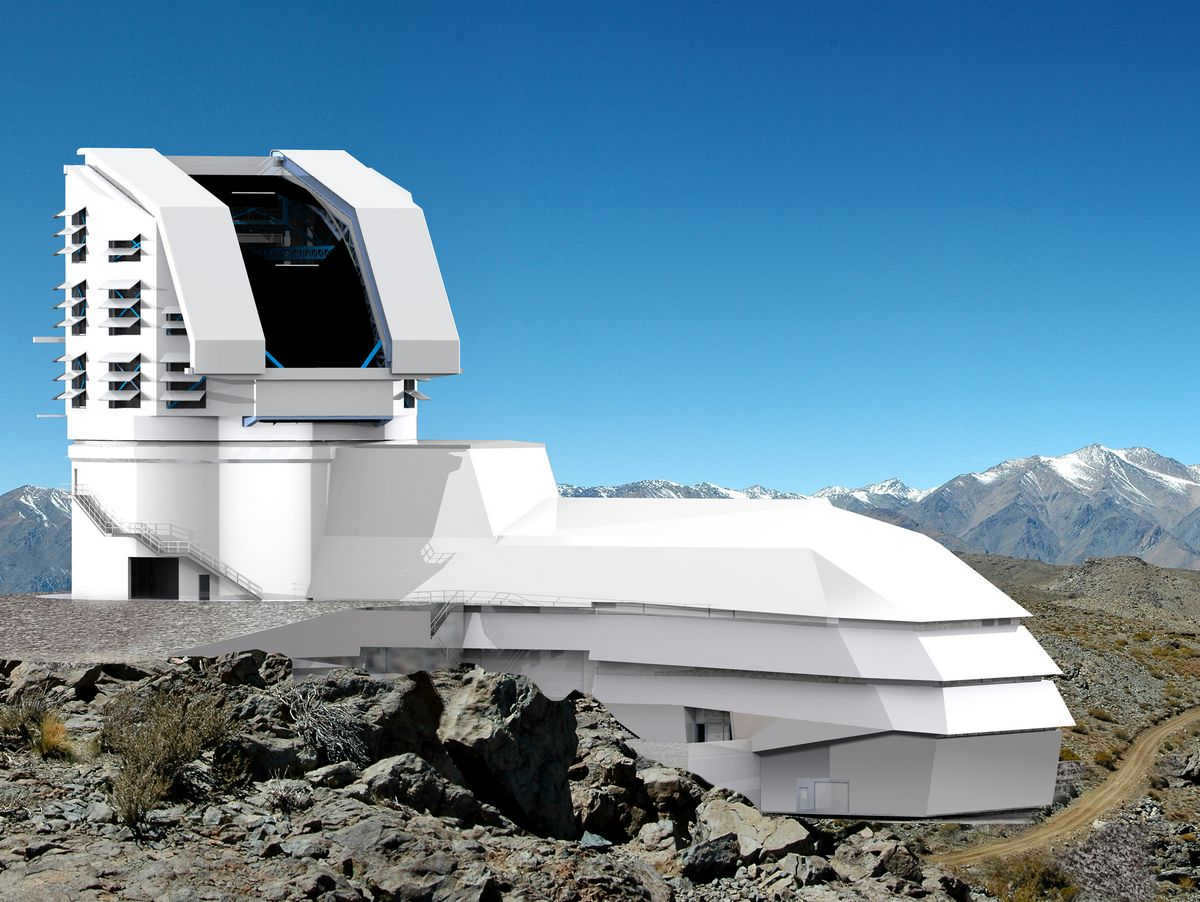
9. South African Large Telescope
Main mirror diameter: 11 x 9.8 meters
Location: South Africa, on a hill near Sutherland, at an altitude of 1798 meters above sea level
The largest optical telescope in the southern hemisphere can be found in South Africa, situated in a semi-desert region close to the town of Sutherland. One-third of the required $36 million for the construction of the telescope was provided by the South African government, while the remaining funds were contributed by Poland, Germany, the UK, the USA, and New Zealand.
It has been developed to carry out visual and spectrometric analysis of radiation emitted by celestial bodies that cannot be observed by telescopes in the northern hemisphere. The SALT team is actively involved in studying quasars, galaxies both nearby and far away, as well as monitoring the life cycle of stars.
A telescope with similar specifications can be found in the United States, known as the Hobby-Eberly Telescope. It is situated in Fort Davis, Texas. Both telescopes share almost identical mirror diameters and cutting-edge technology.
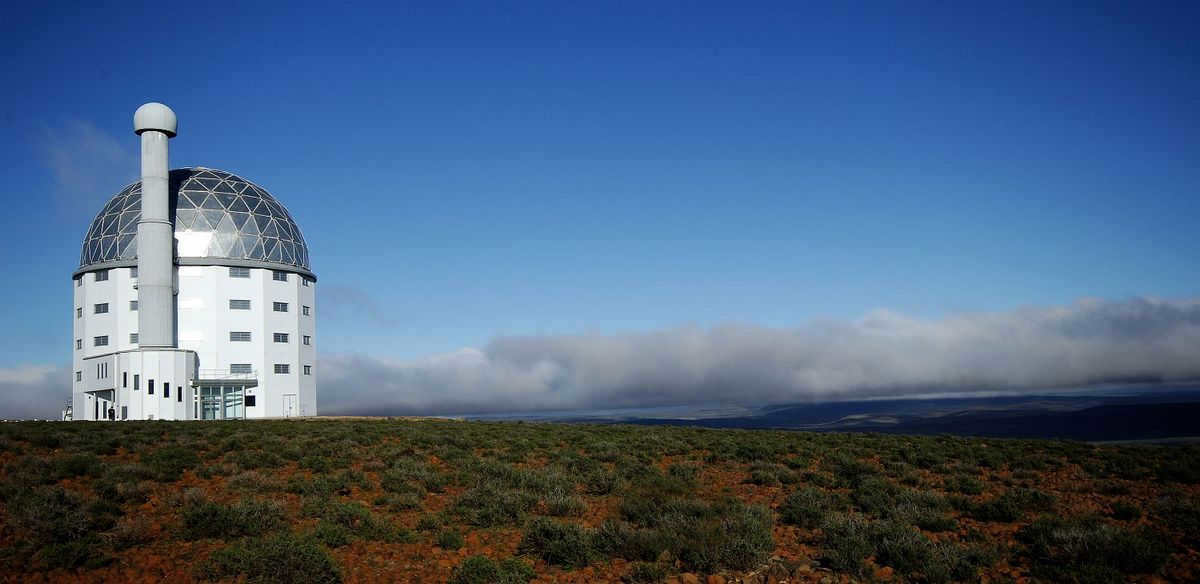
8. Keck I and Keck II
The main mirror of both telescopes has a diameter of 10 meters.
These telescopes are located in the USA, specifically in Hawaii on Mauna Kea, at an altitude of 4145 meters above sea level.
Both of these American telescopes are connected and can function as a single system called an astronomical interferometer. Their strategic location in one of the most optimal astroclimate regions on Earth, where the atmosphere minimally interferes with astronomical observations, has made Keck one of the most effective observatories in history.
The primary mirrors of Keck I and Keck II are indistinguishable from each other and have a comparable structure to the SALT telescope: they are comprised of 36 movable hexagonal components. The observatory equipment facilitates observations of the celestial sphere not only in the optical range, but also in the near infrared spectrum.
In addition to its extensive range of research capabilities, Keck is presently one of the most efficient terrestrial instruments in the quest for exoplanets.
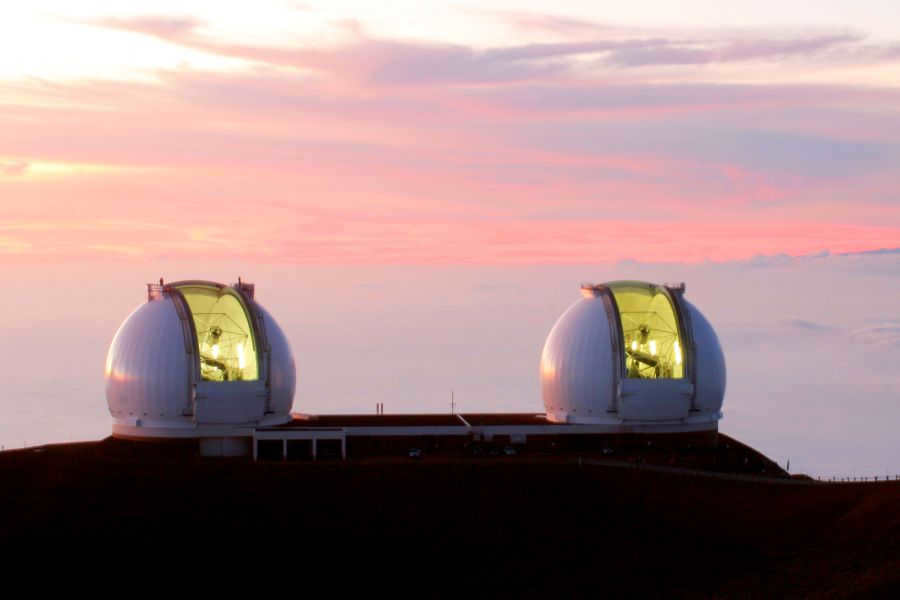
7. Gran Telescopio Canarias
Main mirror diameter: 10.4 meters
Location: Spain, Canary Islands, La Palma Island, 2267 meters above sea level.
The construction of the Gran Telescopio Canarias (GTC) was completed in 2009, marking the official inauguration of the observatory. The ceremony was attended by none other than King Juan Carlos I of Spain. The project had a total cost of 130 million euros, with Spain contributing 90% of the funding and Mexico and the University of Florida each contributing 5%.
The GTC is equipped with the CanariCam and Osiris instruments, which enable it to perform spectrometric, polarimetric, and coronographic investigations of celestial objects. With its optical and mid-infrared capabilities, the telescope is able to observe stars.
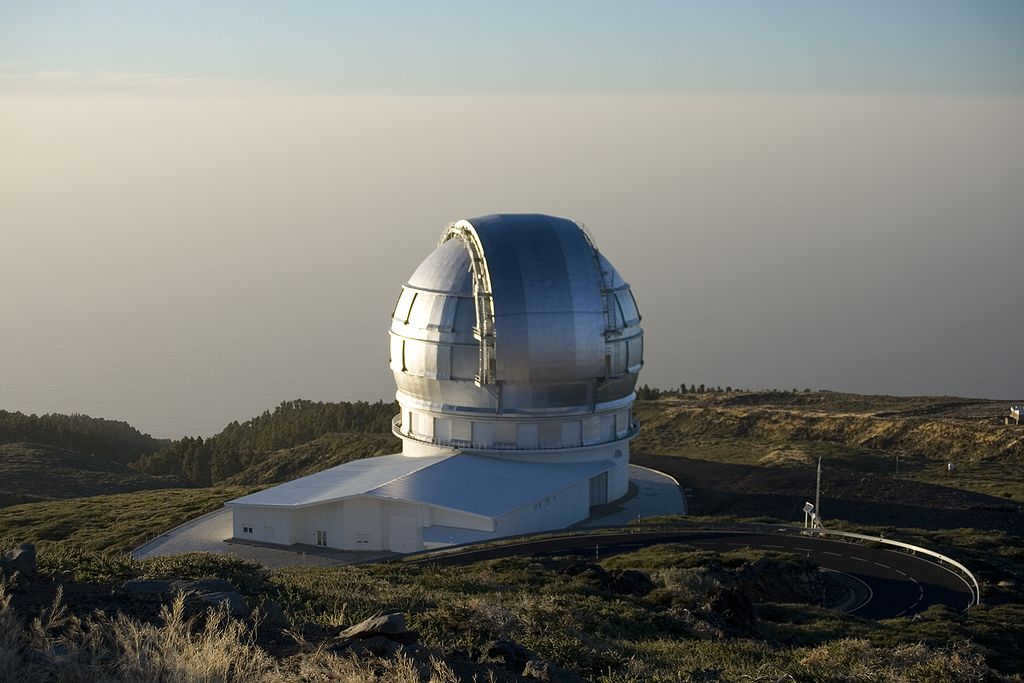
6. Arecibo Observatory
Main mirror diameter: 304.8 meters
Location: Puerto Rico, Arecibo, 497 meters above sea level
Type: reflector, radio telescope
The Arecibo radio telescope, located in Puerto Rico, is one of the most iconic telescopes in the world. It has been featured in various films and even video games. For example, it was prominently shown as the setting for the final showdown between James Bond and his nemesis in the movie GoldenEye. Additionally, it appeared in the sci-fi film adaptation of Carl Sagan’s novel Contact.
Its fame extends beyond the silver screen and into the digital realm. In the popular online game Battlefield 4, there is a map called Rogue Transmission where players engage in military battles around a structure that is an exact replica of the Arecibo Observatory.
Arecibo is an incredibly unique sight: a massive telescope dish, measuring almost a third of a kilometer in diameter, is situated within a natural sinkhole, surrounded by lush jungle and covered in aluminum. Suspended above it is a movable antenna irradiator, which is supported by 18 cables connected to three tall towers positioned at the edges of the reflector dish. This immense structure enables Arecibo to capture electromagnetic radiation across a wide range of wavelengths, from 3 cm to 1 m.
Constructed in the 1960s, this radio telescope has played a crucial role in numerous scientific studies and has been instrumental in making several significant discoveries (such as the initial sighting of the asteroid 4769 Castalia). Arecibo has even contributed to a Nobel Prize: in 1974, Hulse and Taylor were honored for their groundbreaking detection of a pulsar within a double star system (PSR B1913+16).
Starting in the late 1990s, the observatory also served as a tool for the U.S. SETI project in its quest to explore the existence of alien life forms.
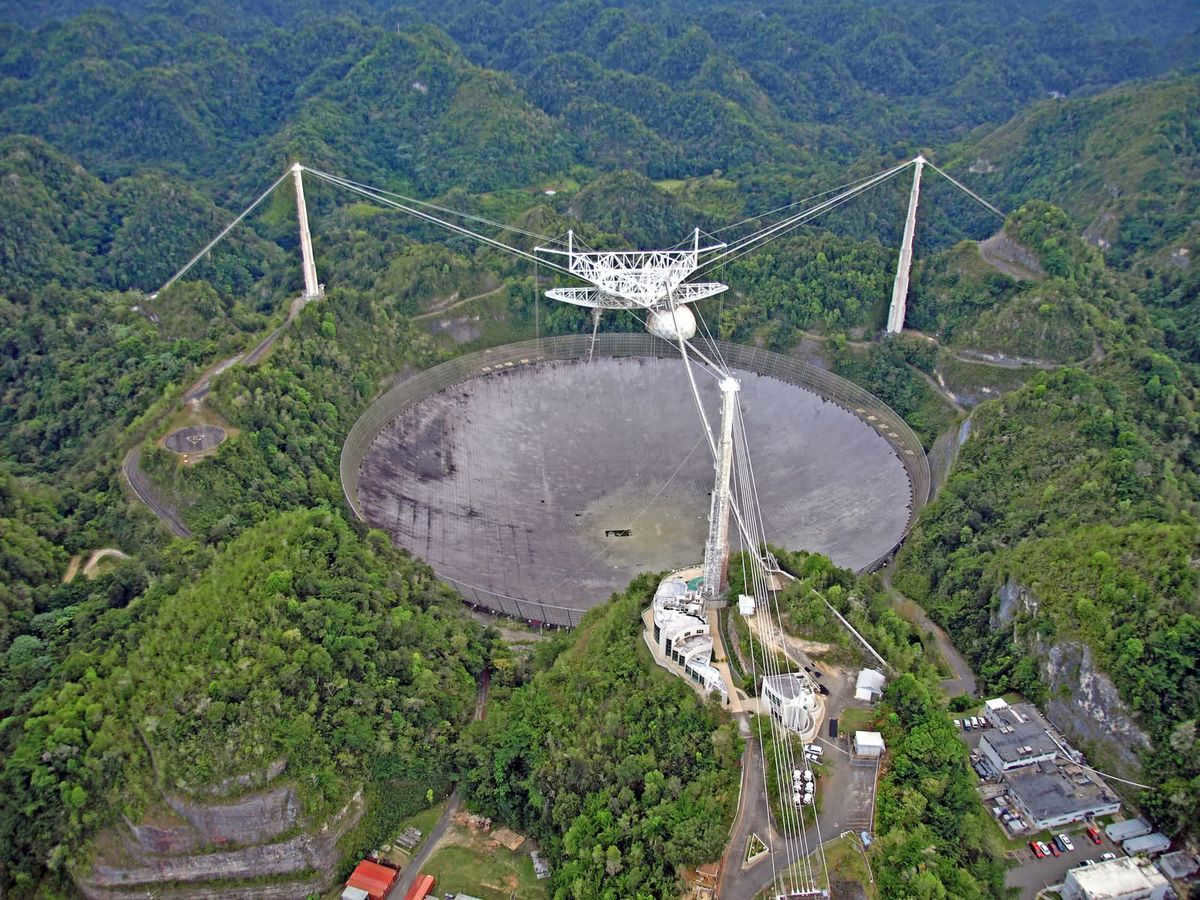
5. Atacama Large Millimeter Array
The diameter of the primary mirror is 12 and 7 meters.
It is located in the Atacama Desert in Chile, 5058 meters above sea level.
The Atacama Large Millimeter Array (ALMA) is a collection of 66 radio telescopes with diameters of 12 and 7 meters. It is currently the most expensive ground-based telescope in operation, with a total cost of approximately 1.4 billion dollars. Funding for ALMA has come from the United States, Japan, Taiwan, Canada, Europe, and Chile.
ALMA is specifically designed for studying millimeter and submillimeter waves, which require a dry and mountainous climate. This is why the telescopes are located on a plateau in the Chilean desert, 5 km above sea level.
The primary scientific objective of the Giant Interferometer is to investigate the cosmic evolution during the initial phases of the Universe, specifically focusing on the formation and subsequent behavior of the initial stellar bodies.
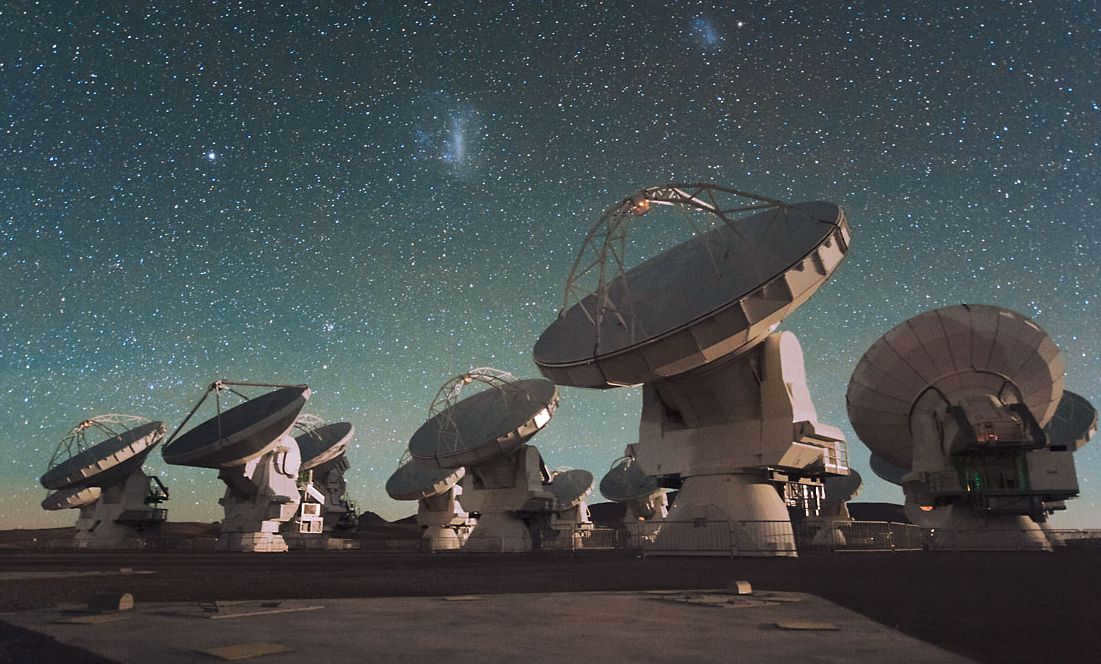
4. Giant Magellan Telescope
Main mirror diameter: 25.4 meters
Location: Chile, Las Campanas Observatory, 2516 meters above sea level.
Located in the Atacama Desert in Chile, the Giant Magellan Telescope (GMT) is currently being built. This joint project between the United States and Australia will feature a main mirror consisting of one central mirror and six surrounding segments that are slightly curved. Together, these segments will form a single reflector with a diameter exceeding 25 meters. The GMT will also incorporate advanced adaptive optics technology to maximize the correction of atmospheric distortions during observations.
Scientists anticipate that these factors will enable GMT to capture images that are 10 times more detailed than those taken by the Hubble telescope, and possibly even surpassing the capabilities of its highly anticipated successor, the James Webb Space Telescope.
GMT has a wide range of scientific objectives, including the search for and imaging of exoplanets, the study of planetary, stellar, and galactic evolution, the exploration of black holes, the investigation of dark energy, and the observation of the earliest generation of galaxies. To achieve these goals, the telescope will operate in the optical, near-infrared, and mid-infrared ranges.
All of the necessary work is expected to be completed by 2020, but GMT may achieve “first light” with just 4 mirrors once they are integrated into the design. Currently, efforts are underway to install the fourth mirror.
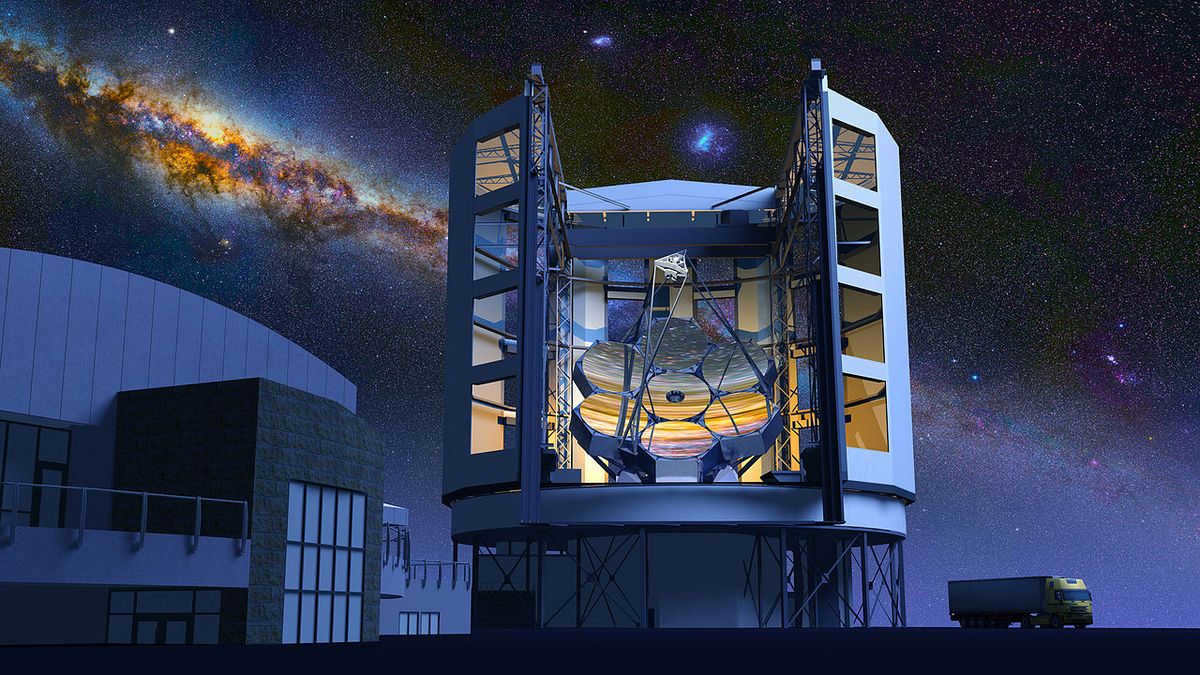
3. Thirty Meter Telescope
The main mirror has a diameter of 30 meters
The telescope is located at Mauna Kea, Hawaii, USA, at an elevation of 4050 meters above sea level.
The TMT has similar goals and characteristics as the GMT and the Keck Hawaiian telescopes. It builds upon the success of the Keck telescope and incorporates larger technology with a main mirror composed of hexagonal elements (this time with a diameter three times larger). The research objectives of the TMT closely align with those of the GMT, including the ability to capture images of the earliest galaxies at the edge of the universe.
The project’s cost has been reported by the media to range from 900 million to 1.3 billion dollars. It is worth noting that both India and China have expressed their interest in participating in the TMT project and have agreed to share some of the financial responsibilities.
Currently, a site for the construction has been selected, although there has been opposition from certain factions within the Hawaiian administration. Mount Mauna Kea holds significant cultural and spiritual significance for native Hawaiians, and many of them vehemently oppose the construction of an ultra-large telescope on this sacred site.
Efforts are underway to address these administrative challenges, and it is expected that they will be resolved in the near future. The construction is anticipated to be fully completed by approximately 2022.
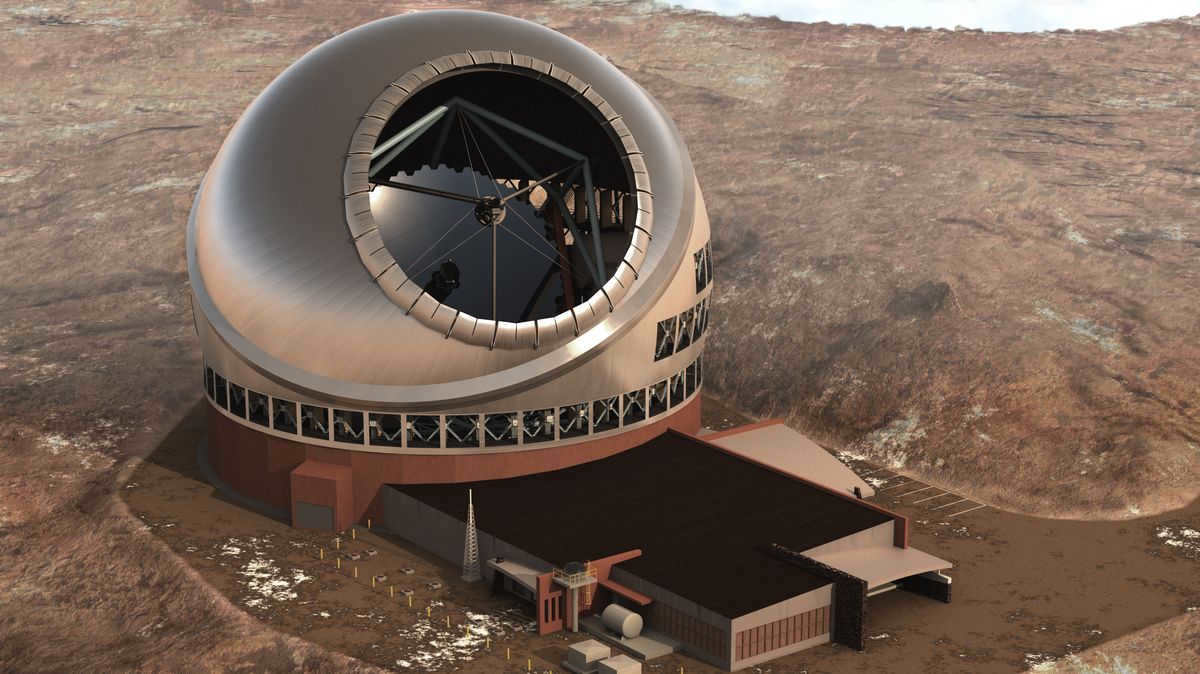
2. Square Kilometer Array
Main mirror diameter: 200 or 90 meters
Location: Australia and South Africa
If constructed, this interferometer will possess 50 times more power than the largest radio telescopes on Earth. The reason for this is that the SKA will span an area of approximately 1 square kilometer with its antennas, granting it unparalleled sensitivity.
The SKA project has a similar structure to the ALMA project, but it will be much larger in size compared to its Chilean counterpart. Currently, there are two options: either constructing 30 radio telescopes with 200-meter antennas or 150 telescopes with a diameter of 90 meters. In either case, the telescopes will be spread out over a planned distance of 3000 kilometers.
A competition was held to determine the country where the telescope would be built. Australia and South Africa made it to the final round, and in 2012, a special commission announced their decision: the antennas will be distributed between Africa and Australia, creating a joint system. Therefore, the SKA project will be located in both countries.

1. The European Extremely Large Telescope
Main mirror diameter: 39.3 meters
Location: Chile, on top of Cerro Armazones mountain, at an elevation of 3060 meters.
The developers of the Thirty Meter Telescope initiative argue that their astronomical apparatus will be the biggest optical telescope worldwide.
Perhaps, for a few years. Nevertheless, by 2025, a telescope that surpasses the TMT by about twelve meters will be fully operational and, unlike the Hawaiian project, is currently being built. We are referring to the indisputable frontrunner among the most recent generation of large telescopes – the European Very Large Telescope, also known as the E-ELT.
The primary mirror of the telescope will be nearly 40 meters in size and will be made up of 798 individual components, each with a diameter of 1.45 meters. This innovative design, combined with state-of-the-art adaptive optics, will give the telescope unprecedented power. Scientists believe that it will not only be capable of detecting Earth-like planets, but also of analyzing the composition of their atmospheres using spectrographs. This breakthrough opens up exciting new possibilities for studying planets beyond our solar system.
Aside from the search for exoplanets, the E-ELT will also explore the early stages of cosmic development, attempt to measure the precise acceleration of the universe’s expansion, and investigate the constancy of physical constants over time. Additionally, this telescope will enable scientists to delve deeper than ever before into the formation of planets and their primary chemical composition in the quest for water and organic materials. In essence, the E-ELT will help address numerous fundamental questions in science, including those related to the origins of life.
According to the European Southern Observatory, the organization behind the project, the telescope has been estimated to cost 1 billion euros.
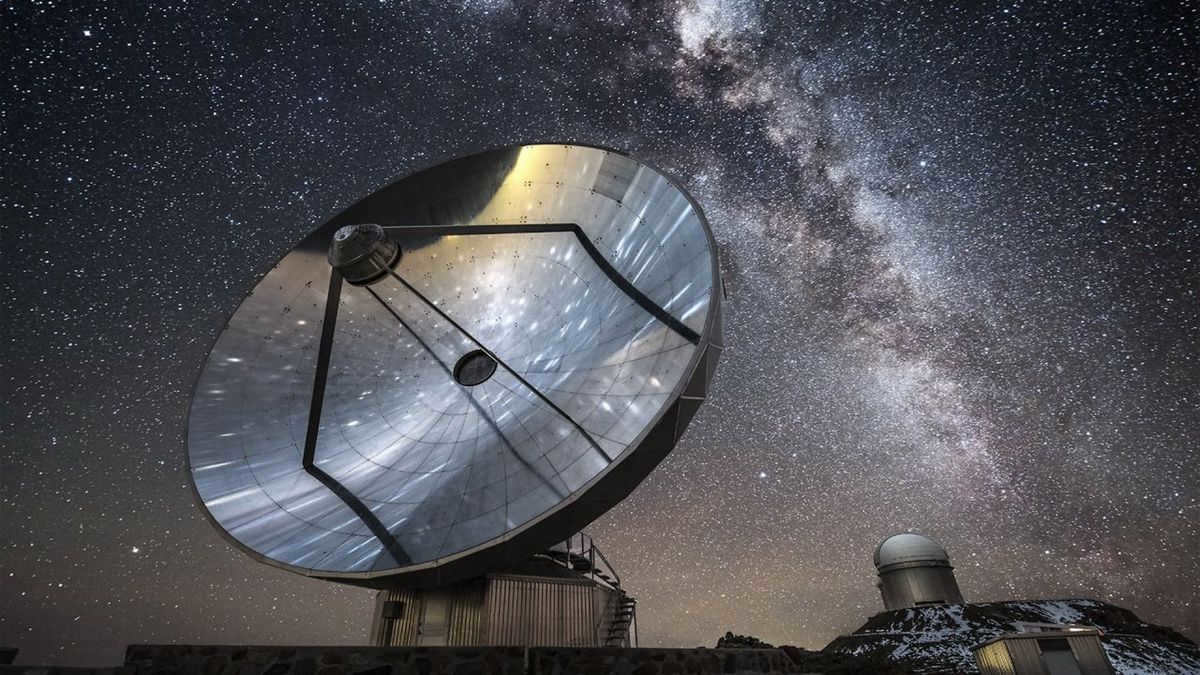
The curiosity of humans about exploring space has driven the advancement of modern ground-based telescopes, which gained even more momentum in the late 20th century. It is widely known that ground-based telescopes have limitations, as they can only observe a fraction of the electromagnetic spectrum, specifically the optical range. This is precisely why space telescopes were developed.
Nevertheless, unlike space telescopes, ground-based telescopes have the advantage of being constructed in colossal sizes. To illustrate, the primary mirror of the largest space telescope currently under development, the James Webb Telescope, measures 6.5 meters. However, this size is only 60% of the dimensions of the largest operational ground-based telescopes.
12. MMT
MMT, also known as Modern Monetary Theory, is a school of economic thought that challenges traditional views on government spending and budget deficits. It argues that a country that controls its own currency can never run out of money, and that the government can spend freely to achieve full employment and other policy goals. According to MMT, inflation is the main constraint on government spending, rather than the budget deficit. This theory has gained popularity in recent years, with proponents arguing that it offers a more realistic and effective approach to macroeconomic policy. However, it has also faced criticism for its potential to fuel inflation and undermine the stability of the financial system.
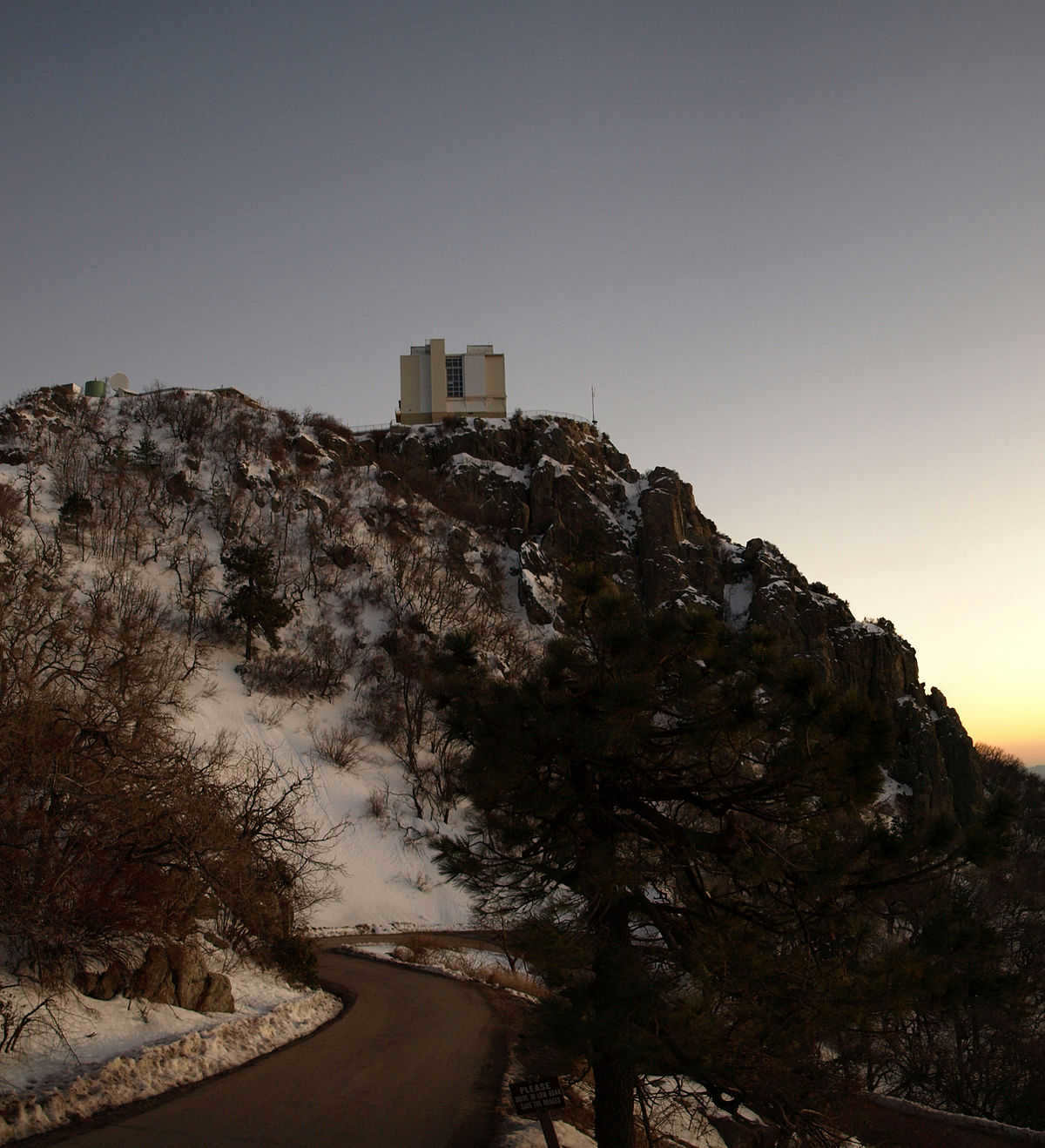
Diameter: 6.5 meters
Location: Mount Hopkins, Arizona, USA
The MMT, which was previously known as the Multi-Mirror Telescope, is situated at the Fred Lawrence Whipple Observatory in Mount Hopkins, Arizona. Originally, it was named after the six small honeycomb-shaped mirrors that were utilized to gather light. However, in 1999, a monoblock primary mirror was installed.
This telescope has brought about numerous groundbreaking advancements in the field. Its adaptive optics system has greatly influenced the innovative design of the Large Binocular Telescope. Moreover, the MMT has achieved improved results in infrared studies by eliminating nearly all potential warm surfaces from its light path.
11. Gemini Observatory
The Gemini Observatory is a world-class observatory located in multiple locations around the globe. It is a collaboration between several countries, including the United States, the United Kingdom, Canada, Australia, Argentina, Brazil, and Chile. The observatory consists of two identical telescopes, one located in Hawaii and the other in Chile. These telescopes work together to provide a comprehensive view of the universe.
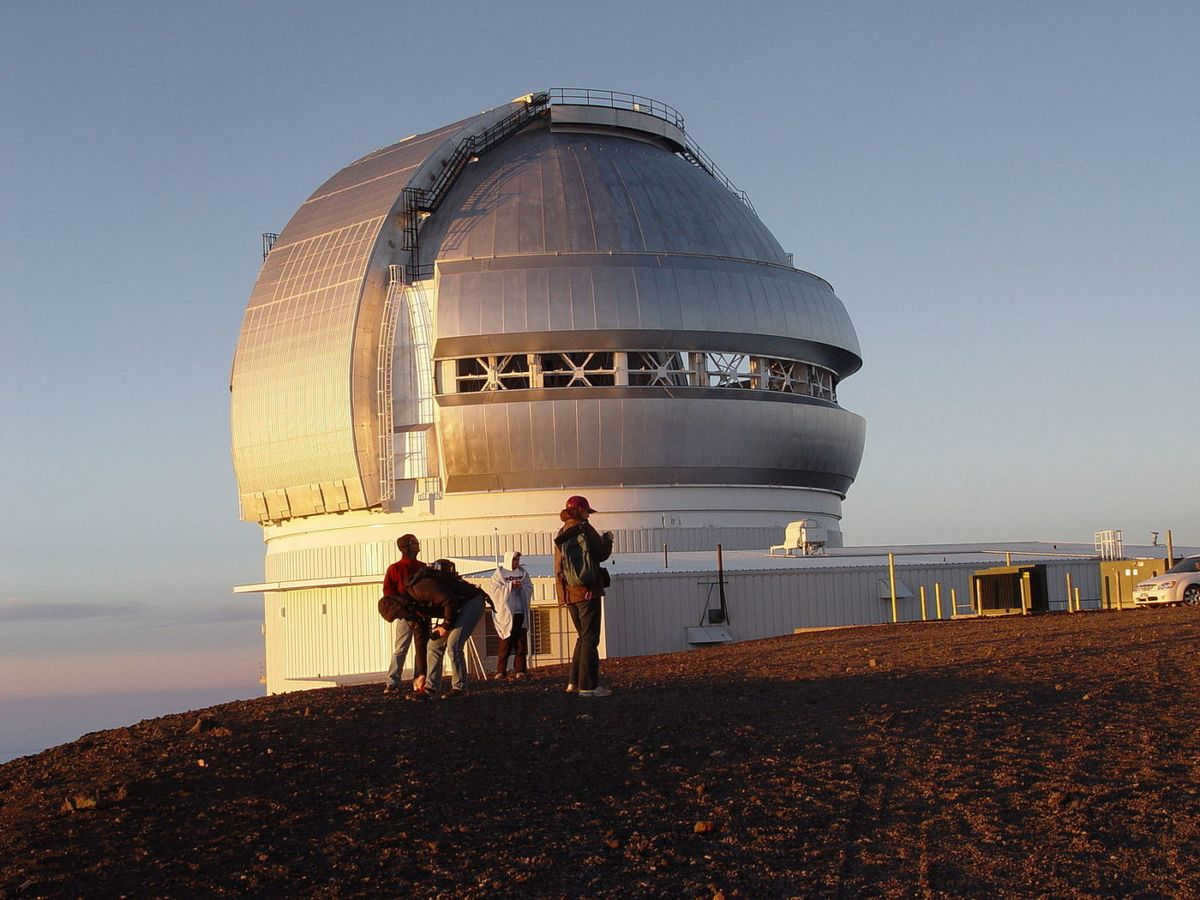
Size: 8.1 meters
Location: Mauna Kea, Hawaii and Cerro Pachón, Chile
Gemini Telescopes, which are owned and supported by five major research organizations from different countries, consist of two identical telescopes that are situated in two separate locations. Both telescopes have the ability to operate in the infrared using wide-field adaptive optics technology.
One of the instruments of the Gemini Telescopes is the Gemini Planet Imager (GPI), which is essentially a high-contrast spectrometer. This instrument allows the telescopes to capture images of exoplanets that orbit around extremely bright stars. The GPI has successfully detected 51 Eridani b, which is believed to be a million times dimmer than its parent star, 51 Eridani.
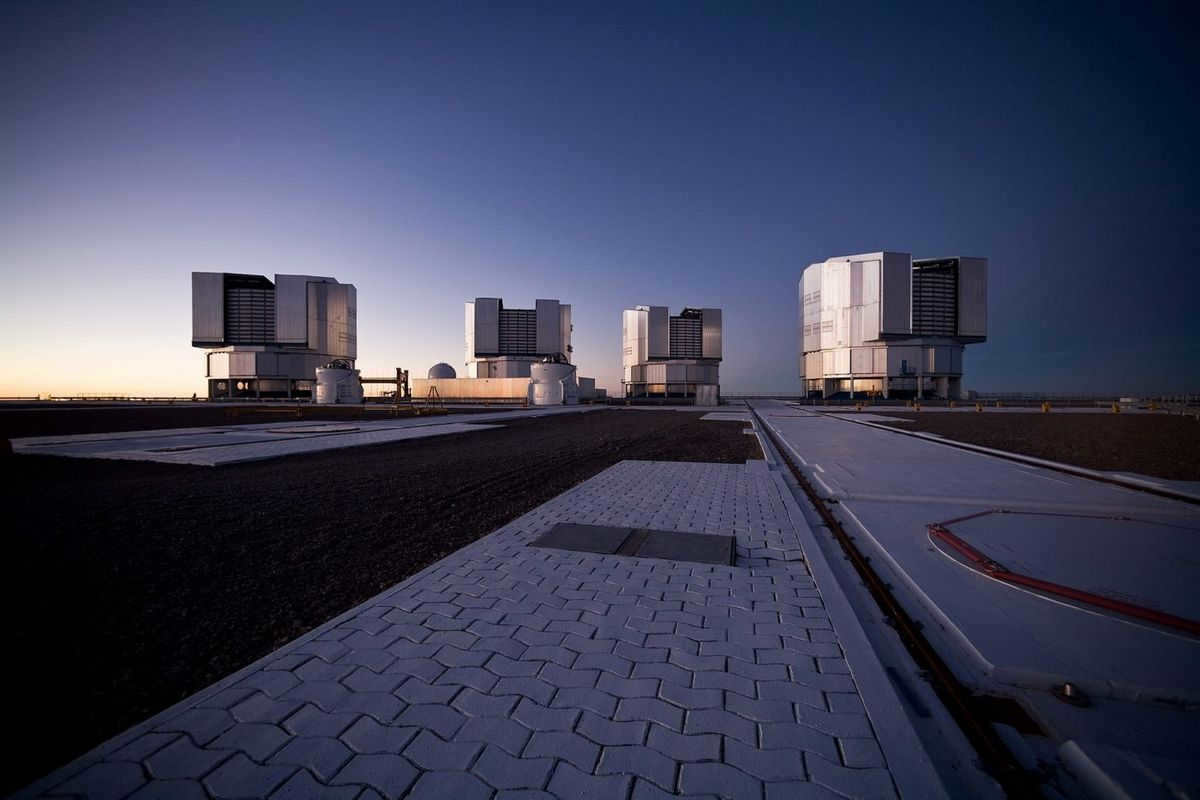
Diameter: 8.2 meters.
Location: Atacama Desert, Chile
The Very Large Telescope (VLT) is likely one of the most renowned telescopes globally. The VLT is composed of four individual telescopes, each with a primary mirror measuring 8.2 meters in diameter. These telescopes can operate independently or together to enhance angular resolution.
The VLT has the capability to observe both visible light and infrared radiation. All four telescopes are connected to the Very Large Telescope Interferometer Instrument (VLTI), enabling researchers to conduct interferometry studies on bright astronomical objects such as stars and nebulae.
Following the Hubble Space Telescope, the OBT is perhaps the most prolific research facility (functioning at visual wavelengths) in terms of the overall amount of peer-reviewed articles released thus far. In 2017, the OBT contributed to over 600 scientific papers published.
It holds the distinction of being the initial telescope to capture a direct image of an exoplanet (Beta Pictoris b). The OBT is among the select observatories that monitor stars in orbit around the supermassive black hole located at the heart of the Milky Way.
The Subaru Telescope: A Unique Astronomical Instrument
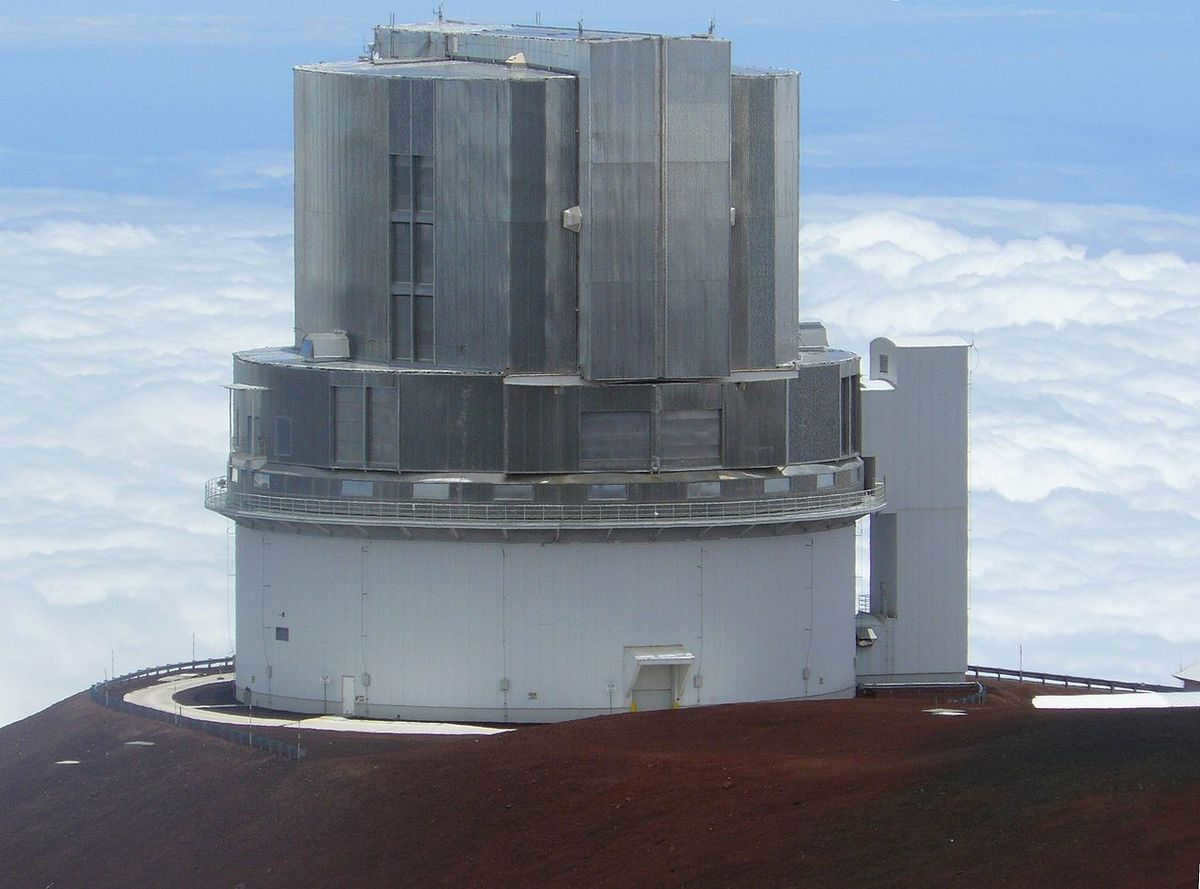
Diameter: 8.4 meters
Location: Mauna Kea, Hawaii, USA
The Subaru Telescope, situated at the renowned Mauna Kea Observatory, is operated and overseen by the National Astronomical Observatory of Japan. It is named in honor of the widely known open star cluster, the Pleiades.
It is a single mirror-type telescope, nearly identical to the slightly larger Gemini telescopes. Various advanced technologies, such as the Multi-Object Infrared Camera and Spectrograph (MOIRCS) and the Cooled Mid-Infrared Camera and Spectrometer (COMICS), enable astronomers to simultaneously study multiple targets, including cool interstellar dust.
The Subaru telescope stands out among the few telescopes that have been utilized without the aid of any additional instruments. Thanks to its expansive field of vision and impressive capacity to gather light, Subaru is primarily employed for capturing extensive, wide-angle images of the cosmos. Moreover, owing to these exceptional characteristics, Subaru is also instrumental in the ongoing pursuit to identify the theorized ninth celestial body within our solar system.
8. The Large Binocular Telescope (also known as The LBT)
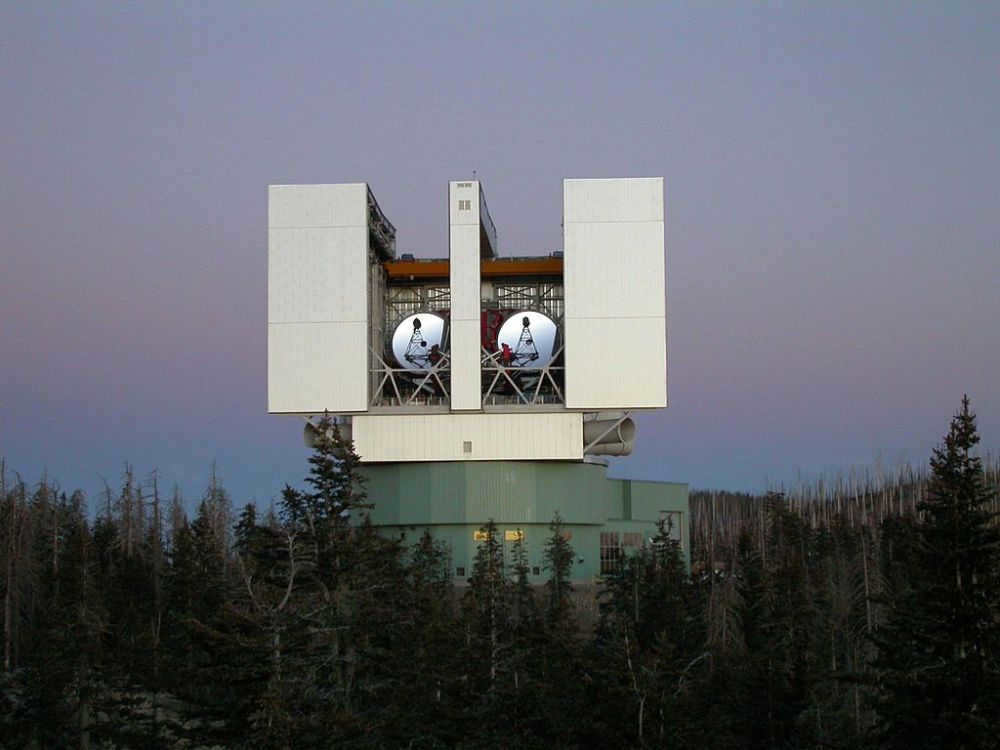
Diameter: 8.4 meters
Location: Pinaleno Mountains, Arizona, USA
The Large Binocular Telescope (LBT) is an exceptional optical telescope that boasts two identical primary mirrors, each measuring 8.4 meters in width, resulting in a combined circular aperture of 11.8 meters.
In theory, the LBT is larger than any other individual telescope currently in operation. However, due to its ability to collect light with a significantly lower diffraction limit, it cannot be observed in the same proportion. Nonetheless, it remains the largest unsegmented telescope in existence.
The LBT’s distinctive design, along with its light-adaptive optics, minimizes atmospheric phase errors, offers a low thermal background, provides high angular resolution, and exhibits exceptional sensitivity in detecting faint, faraway objects.
In 2008, the LBT collaborated with the Space Telescope and achieved the remarkable feat of identifying a remote galaxy cluster, known as 2XMM J083026 + 524133, situated approximately 6 billion light-years from our planet.
7. The Impressive South African Telescope
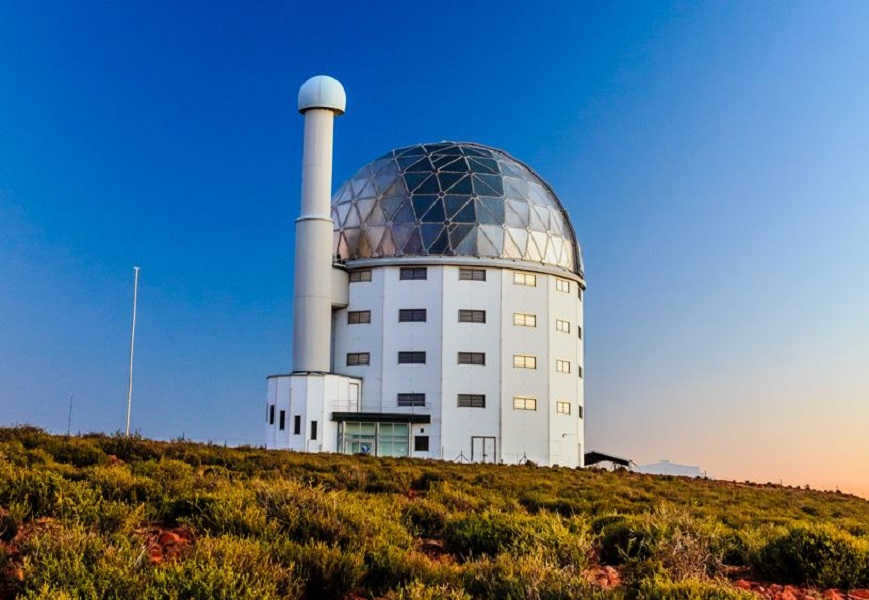
Diameter: 9.2 meters.
Location: Sutherland, South Africa
The South African Large Telescope (SALT) is presently the largest optical telescope in the southern part of the globe. It has a unique mirror design fixed at an angle of 37 degrees and is based on the Hobby-Eberly telescope located at McDonald’s Observatory. The fixed zenith angle enables the telescope to observe a significant portion of the sky. The primary mirror is composed of 91 hexagonal segments.
Its configuration permits scientists to conduct spectroscopic and polarimetric analysis of celestial objects that are not visible from the northern part of the globe. In the coming years, SALT will concentrate on studying distant quasars and faint galaxies.
6. Keck 1 and 2
The Keck Observatory consists of two telescopes, Keck 1 and Keck 2. Both telescopes are equipped with advanced technology and have made significant contributions to astronomical research. The Keck 1 telescope, which was commissioned in 1993, was the first of the two telescopes to be built. It has a primary mirror that is 10 meters in diameter, making it one of the largest telescopes in the world. The Keck 2 telescope, which was commissioned in 1996, is identical to the Keck 1 telescope in terms of its design and capabilities. Together, these two telescopes have revolutionized our understanding of the universe and continue to play a vital role in advancing our knowledge of astronomy.
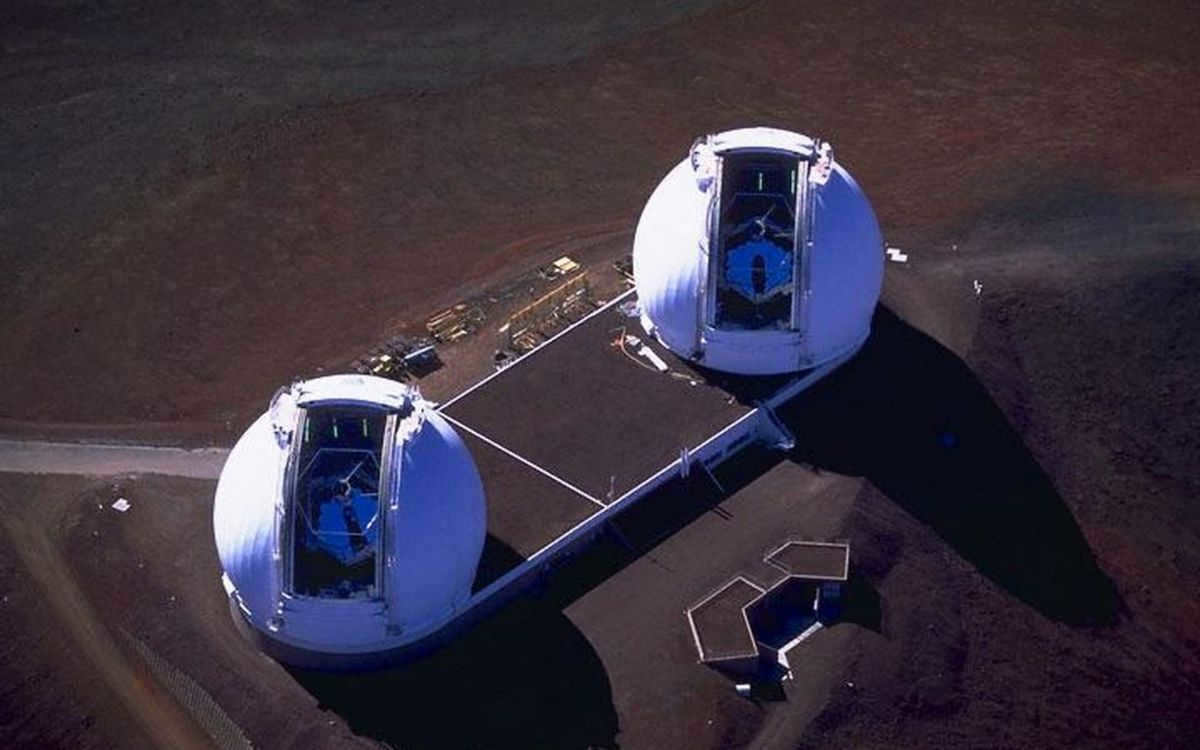
Diameter: 10 meters.
Location: Mauna Kea, Hawaii, USA
The Keck Observatory, situated on Mauna Kea in Hawaii, is home to the world’s largest telescope. With a diameter of 10 meters, the twin telescopes boast 36 hexagonal segments that make up their main mirrors.
Equipped with cutting-edge technology, including laser-guided adaptive optics, these telescopes are at the forefront of astronomical research. Among their impressive instruments is the Deep Extragalactic Imaging Multi-Object Spectrograph (DEIMOS), which has the capability to capture light from over 130 galaxies in a single exposure.
The Keck telescopes have a remarkable instrument called the Near Infrared Camera (NIRC). It is incredibly sensitive, to the point where it has the ability to detect even the smallest flame on the surface of the Moon. This sensitivity enables the telescopes to gather valuable data on distant galaxies, protogalaxies, and quasars, providing insights into their formation and evolution.
5. Eberly – The Telescope for Hobbyists
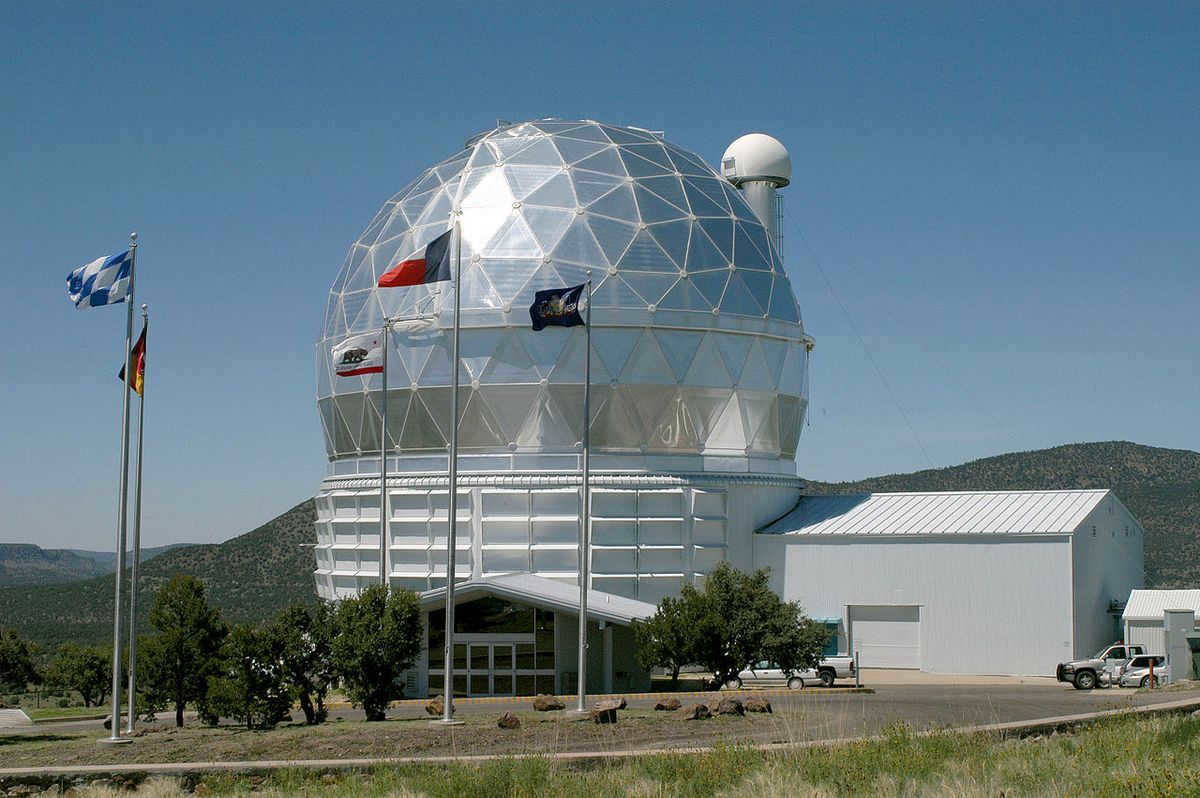
Size: 10 meters in diameter.
Location: Situated in Davis Mountain, Texas, USA.
The Hobby-Eberly Telescope (HET) is currently positioned at the renowned McDonald Observatory in Texas. It is considered to be the second largest optical telescope in the world, boasting a useful optical aperture of 10 meters (with an actual diameter of 11 meters). Similar to many other large telescopes, the main mirror of Hobby-Eberly consists of numerous small hexagonal segments, precisely 91 in total.
Primarily, Hobby-Eberly is utilized for the detection and study of remote galaxies and various stellar objects through spectroscopy. Throughout its existence, the telescope has successfully identified a multitude of exoplanets and has accurately determined the rotation rate of several galaxies.
The establishment is dedicated to the memory of the former Texas Lieutenant Governor Bill Hobby and the renowned University of Pennsylvania graduate Robert Eberly.
4. Enormous Canary Telescope
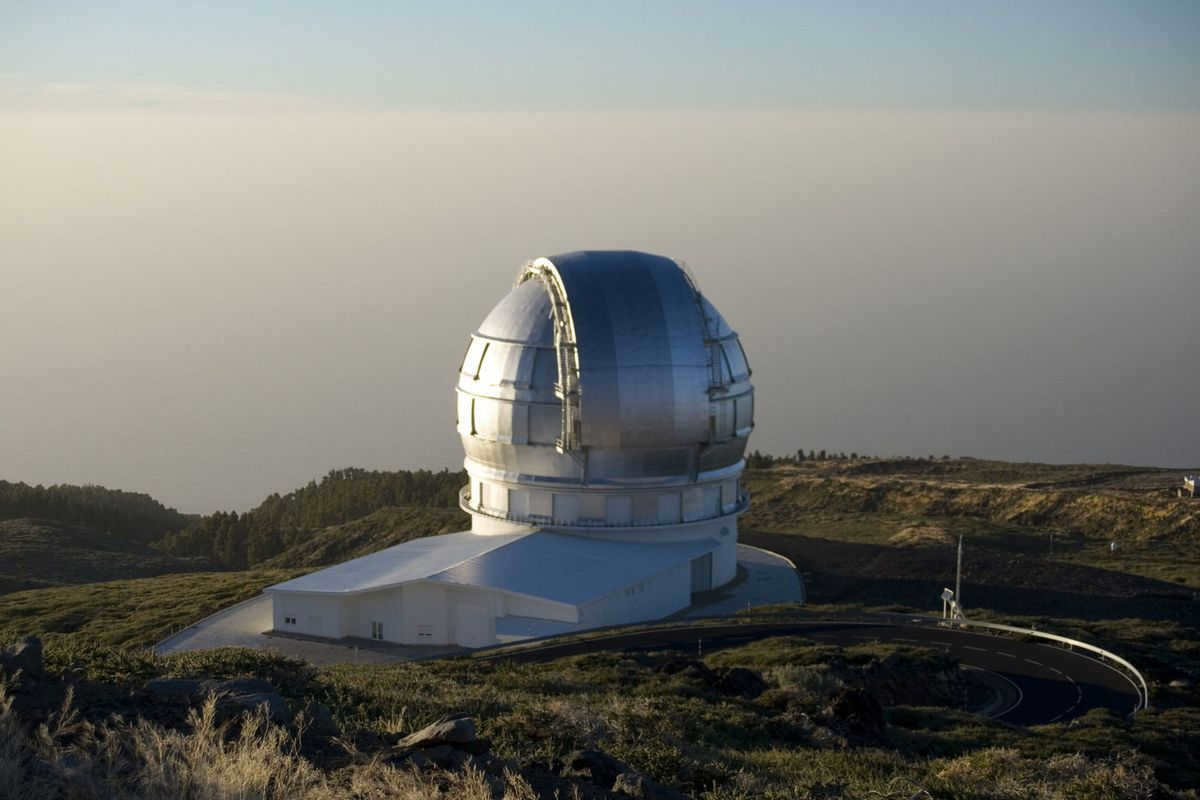
Diameter: 10.4 meters
Location: La Palma, Canary Islands, Spain
The Gran Telescopio Canarias (GranTeCan) could potentially be the largest telescope with a segmented primary mirror that is currently in operation. Sponsored by universities and institutes from multiple countries, this ambitious project is spearheaded by the IAC Institute for Astrophysical Research in Spain.
During its initial testing phase, the telescope was equipped with only 12 hexagonal segments. However, it has since been expanded to include 36 fully equipped segments, along with an adaptive control system.
There are three primary imaging instruments on the telescope: MEGARA, a spectrograph that can detect multiple wavelengths of light; CanariCam, an advanced scanner that can capture mid-infrared images and has polarimetric capabilities; and OSIRIS, a spectroscopy device that offers integrated low-resolution capabilities.
The construction of the telescopes is currently in progress
3. The Enormous Magellan Telescope
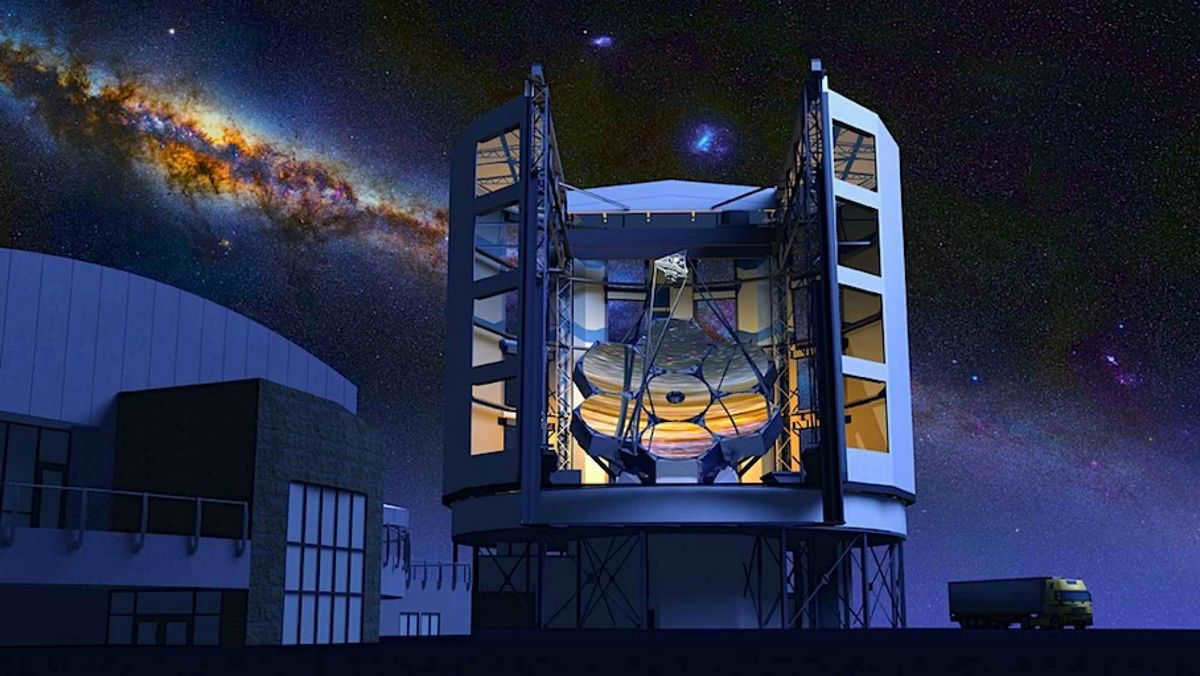
Diameter: 24.5 m
Location: Vallenar, Chile
Estimated completion: 2025
Around twelve extremely large telescopes are currently in the process of being built, and the Giant Magellan Telescope is one of them.
Ultimately, it will consist of seven identical segments that are 8.4 meters wide, forming the main mirror. However, it will initially start with four segments. These segments will be arranged symmetrically, with one in the center.
The telescope is expected to achieve an imaging resolution that is approximately ten times better than the Hubble Space Telescope. The entire project is anticipated to cost around 1 billion dollars.
2. The 30-meter Telescope

Diameter: 30 meters
Location: Mauna Kea, Hawaii
Estimated completion: 2027
The Thirty Meter Telescope (TMT) is an ambitious project aiming to construct a state-of-the-art astronomical telescope. Its main feature is a segmented primary mirror with a diameter of 30 meters, complemented by two smaller mirrors to enhance its overall capabilities. Upon completion, it is expected to become the second largest telescope globally.
The TMT is specifically designed to operate within the near-ultraviolet to mid-infrared wavelength range. Equipped with a cutting-edge multi-conjugate adaptive optics system, it will enable researchers to observe celestial objects with minimal atmospheric interference.
The placement of the project has led to significant social and political turmoil across Hawaii. Presently, Mauna Kea harbors 13 distinct observatories spread over 500 acres of land, which holds cultural importance for the local populace.
1. The European Extremely Large Telescope
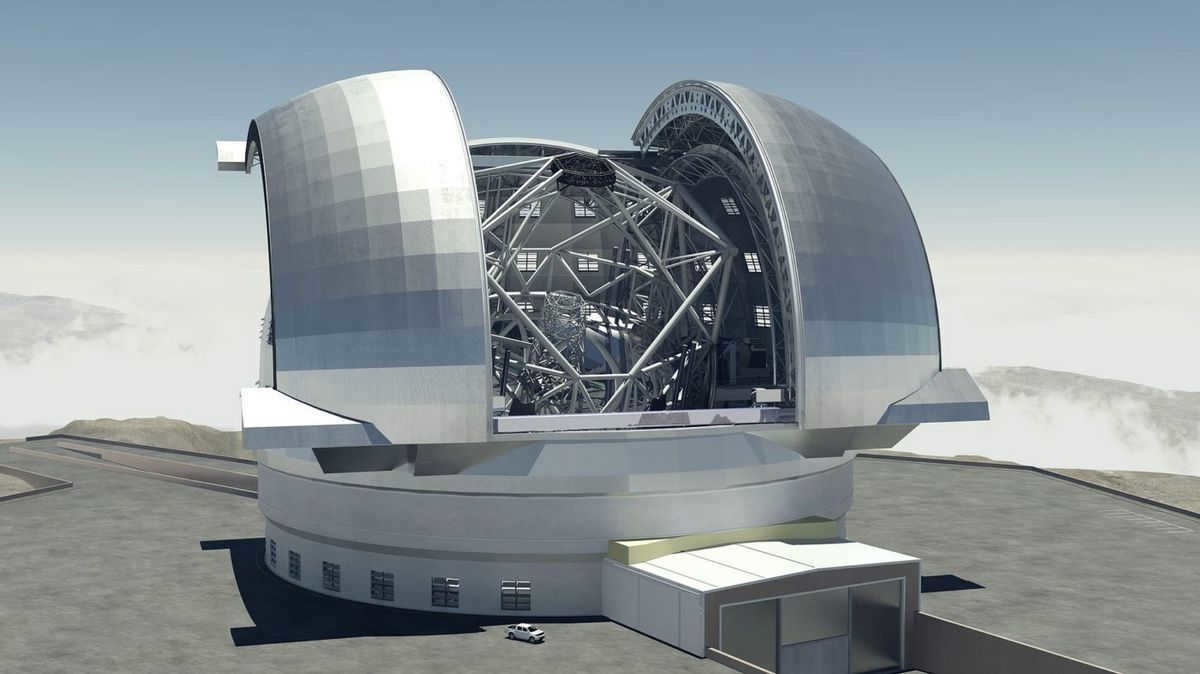
Diameter: 39.3 meters
Location: Cerro Armazones, Chile
Estimated completion: 2024
If everything goes as planned, the European Extremely Large Telescope (ELT) will become the world’s largest telescope by 2024. It will have the capacity to gather 13 times more light than any other existing optical telescope and produce images that are 16 times more precise than those taken by the Hubble Space Telescope.
In addition to the colossal 39-meter-long primary mirror (comprising of 798 hexagonal segments), the telescope will incorporate four supplementary mirrors to enhance image quality and enable adaptive optics. The ELT will embark on a quest to discover remote exoplanets, scrutinize supermassive black holes, and explore the earliest galaxies in the cosmos with unprecedented depth and precision.
With its state-of-the-art array of instruments, astronomers will be equipped to identify organic molecules and water in the vicinity of youthful stars, facilitating a deeper understanding of planetary evolution. The initial stage of this groundbreaking telescope is projected to incur a price tag of approximately €1 billion.
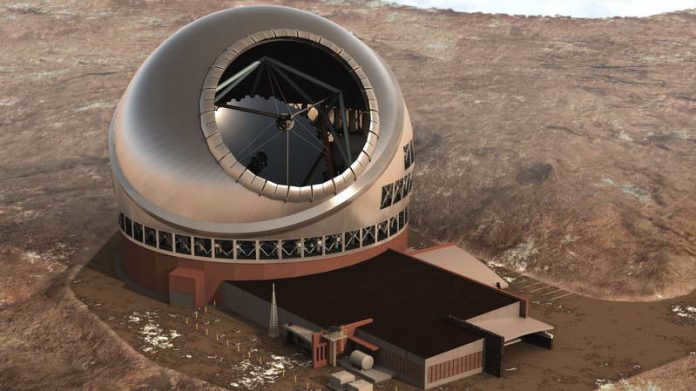
Throughout history, humanity has always held a fascination with exploring the vastness of space. Since ancient times, the desire to witness the stars and planets up close has driven the development of various technologies.
In today’s world, numerous countries are investing in the construction of large and powerful telescopes capable of peering deep into outer space. These telescopes often work in conjunction with other equipment, such as radio telescopes or specialized spacecraft like the renowned Hubble, to provide a more comprehensive understanding of the universe.
Below is an updated list of the ten largest operating telescopes in the world, ranked according to the diameter of their primary mirrors.
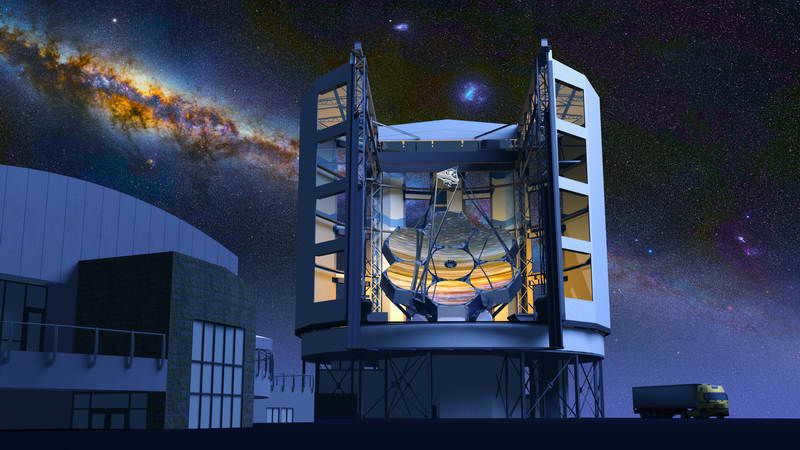
Main mirror diameter: 6.5 meters
Observatory: Las Campanas
Location: Vallenar, Chile
The Magellan 1 and Magellan 2 telescopes are situated on the summit of Las Campanas Mountain in Chile. These telescopes, which operate in tandem, are designed to deliver more precise findings. Each telescope is equipped with a 6.5-meter diameter mirror. The observatory is managed by a consortium led by the Carnegie Institute of Sciences, which was responsible for its construction.
The primary goal behind the construction of the Magellan 1 and Magellan 2 telescopes was to facilitate scientific research in a wide range of astronomical disciplines, including the study of dark matter, the formation of stars and galaxies, and the discovery of new exoplanets.
9. MMT
Phrasing the text to make it unique while preserving HTML markup:
9. MMT
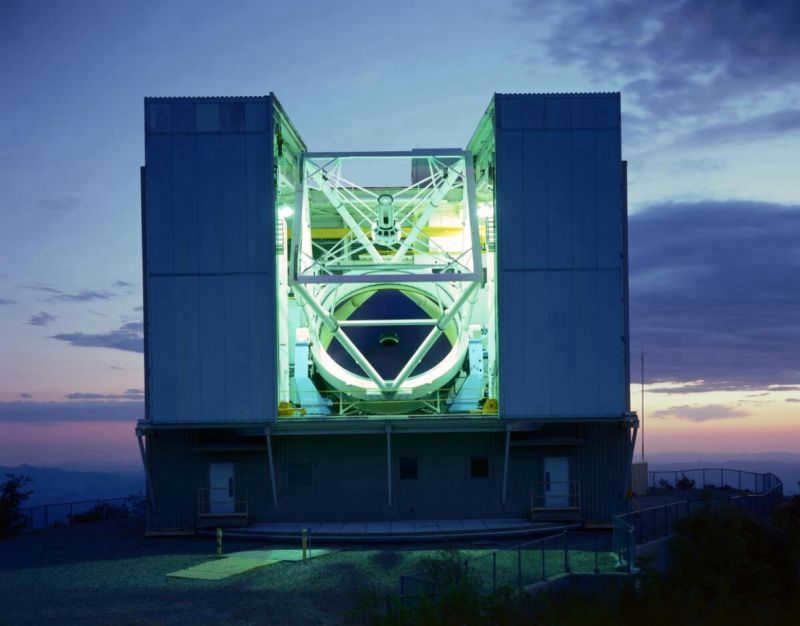
Main mirror size: 6.5 meters.
Observatory: MMT
Location: Arizona, USA
The MMT (Multiple Mirror Telescope) observatory is situated on Mount Hopkins in Arizona, United States. It was constructed in 1979 and has undergone several upgrades since then. Initially, it featured a telescope with six honeycomb mirrors. However, in 1998, Professor Roger Angel managed to produce a single large mirror with a diameter of 6.5 meters, replacing the honeycomb mirrors.
A second mirror was installed on the MMT in 2002, resulting in a notable improvement in the clarity of the captured images. The Multiple Mirror Telescope plays a crucial role in the examination of galaxies and nebulae. Moreover, for a number of years, the global astronomical community has had the privilege of accessing the MMT observatory without any cost, courtesy of the initiative implemented by the National Science Foundation.
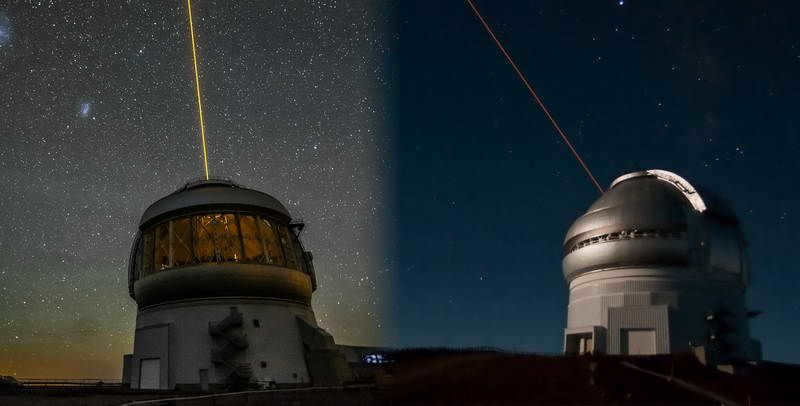
The main mirror has a diameter of: 8.1 meters.
The observatory is: Gemini
It is located in: Chile, Hawaii
The Gemini Observatory is comprised of two telescopes situated in different parts of the globe. Collectively, they offer coverage of the entire northern and southern celestial hemispheres. Gemini is a collaborative effort between the governmental organizations of the United States, Argentina, Brazil, Chile, and Canada.
The North Telescope is constructed in Hawaii and resides atop the dormant volcano Mauna Kea. On the other hand, the southern telescope is positioned in the Andes Mountains of Chile. Both telescopes possess mirrors with a diameter of 8.1 meters, which enables observations across a range of wavelengths from ultraviolet to infrared. Consequently, they serve as highly potent instruments for studying exoplanets, supernovae, cosmic radiation, and various other phenomena.
7. The VLT: A Remarkable Observatory for Stargazing
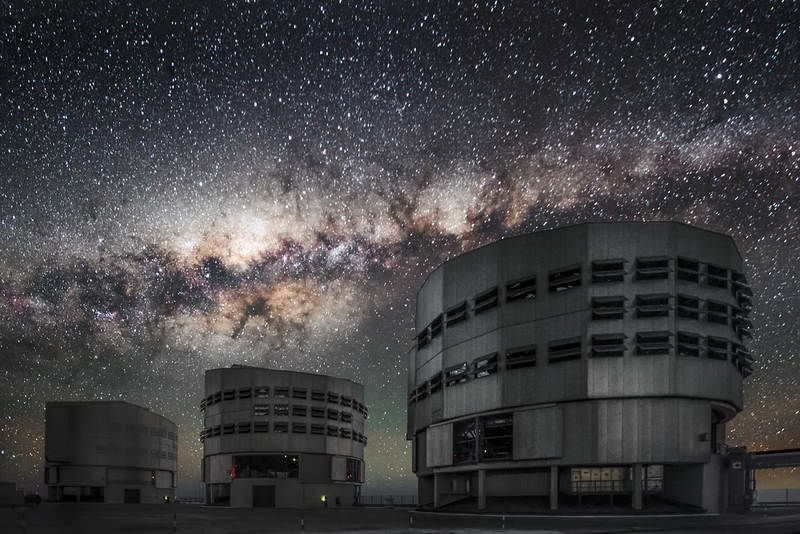
Main mirror size: 8.2 meters in diameter
Observatory: European Southern Observatory
Location: Cerro Paranal, Chile
The Very Large Telescope (VLT) is a renowned observatory that comprises of four optical telescopes, each equipped with a mirror that has a diameter of 8.2 meters. This remarkable facility is situated on the Chilean plateau in the Paranal region. It stands out as one of the most influential and significant telescope installations globally.
Operated by the European Southern Observatory (ESO), the VLT is utilized for a diverse range of astronomical research endeavors, with a primary focus on the exploration of black holes and dark matter.
One of the features of the Very Large Telescope is its ability to utilize interferometry, which enables the merging of images captured by multiple telescopes for enhanced resolution and greater image detail.
6. Subaru
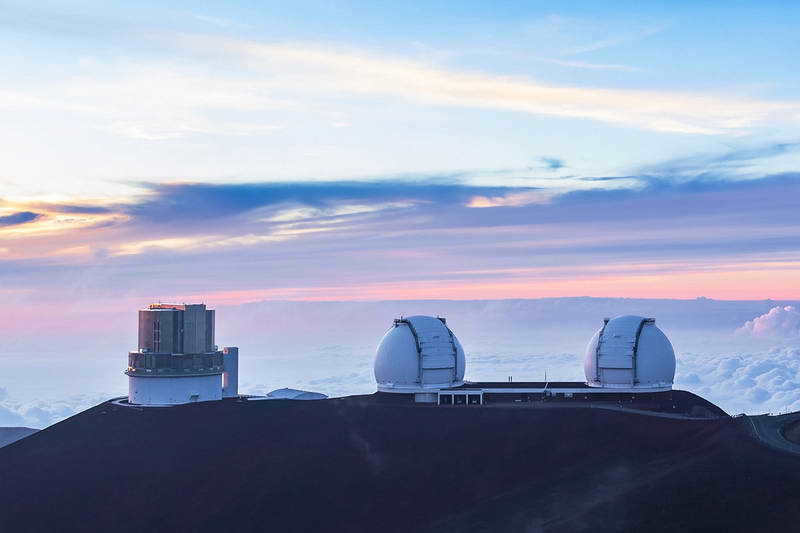
Primary mirror size: 8.2 meters.
Observatory: Mauna Kea
Location: Hilo, Hawaii
During the 1980s, the National Astronomical Observatory of Japan initiated an incredibly ambitious project to construct the largest reflecting telescope of that era. The University of Hawaii was assigned the task, and it took until 1998 to complete the construction.
This observatory was employed to search for a hypothetical ninth planet within our solar system. So far, no one has managed to detect it, but its existence could account for the gravitational perturbations of other planets.
It is worth noting that the Subaru telescope is not affiliated with the automobile manufacturer of the same name.
5. Large Binocular Telescope (LBT)
The Large Binocular Telescope (LBT) is a cutting-edge astronomical observatory located on Mount Graham in Arizona, United States. With a total weight of over 580 tons and a mirror diameter of 8.4 meters, it is one of the largest and most powerful telescopes in the world.
The LBT consists of two identical telescopes, which work together to create a combined image that is much sharper and more detailed than what a single telescope could achieve. This innovative design allows the LBT to capture images with a resolution equivalent to a 22.8-meter telescope.
One of the key advantages of the LBT is its ability to observe the universe in both visible and infrared light. This allows astronomers to study a wide range of celestial objects, from nearby planets to distant galaxies. The LBT also has a suite of advanced instruments that enable scientists to conduct a variety of different observations, such as spectroscopy and imaging.
In addition to its scientific capabilities, the LBT is also a testament to international collaboration. The telescope is operated by a consortium of institutions from the United States, Germany, and Italy, who have come together to build and maintain this state-of-the-art facility.
Overall, the Large Binocular Telescope is a remarkable feat of engineering and a valuable asset to the field of astronomy. Its advanced technology and unique design make it an invaluable tool for studying the cosmos and expanding our understanding of the universe.
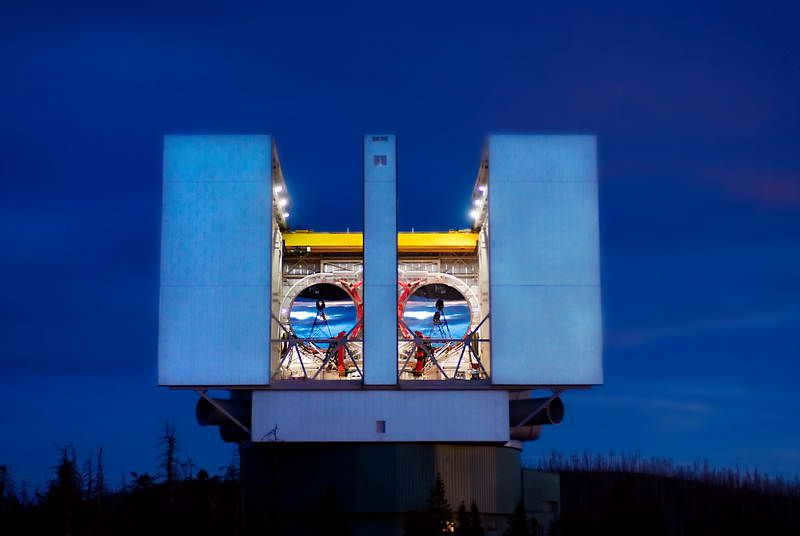
The main mirror has a diameter of: 8.2 meters.
The telescope is located at the: Mount Graham International Observatory in Arizona, USA.
The LBT, or Large Binocular Telescope, is a unique telescope made up of two 8.2 meter diameter mirrors that work together. This design allows for incredibly detailed images to be captured. The observatory is a collaborative effort between various American universities and international astronomical organizations.
The LBT is situated atop Mount Graham, at an elevation exceeding three thousand meters. Throughout the construction of the observatory, the San Carlos Apache tribe made efforts to halt the project based on religious concerns, while environmental organizations feared it would endanger the survival of a species exclusive to the mountain. As a result, a distinct bill had to be passed in the U.S. Congress to ensure the completion of the LBT.
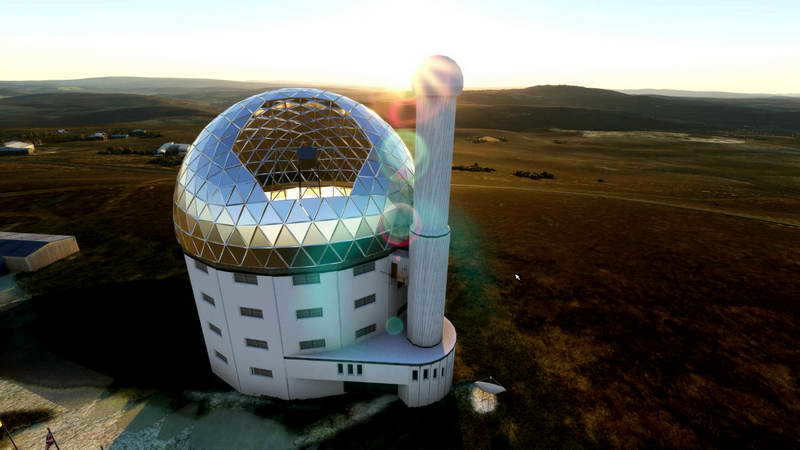
Size of the primary mirror: 9.8 meters.
Facility: South African Astronomical Observatory
Location: Sutherland, South Africa
The South African Large Telescope (SALT) is the biggest individual optical telescope in the southern hemisphere and one of the largest globally. It is situated at the South African Astronomical Observatory near Sutherland, South Africa. SALT stands out from other telescopes in this category. In reality, it consists of an array of hexagonal mirrors with a diameter of one meter and a total of 91 units.
SALT has the capability to capture images of fast-moving objects, but on a cosmological scale. The South African Astronomical Observatory has made significant contributions to the study of the Magellanic clouds and black holes.
SALT has also contributed to the identification of the “polar” star, an extraordinary binary system in which a dying star is sustained by its companion.
3. Keck telescopes
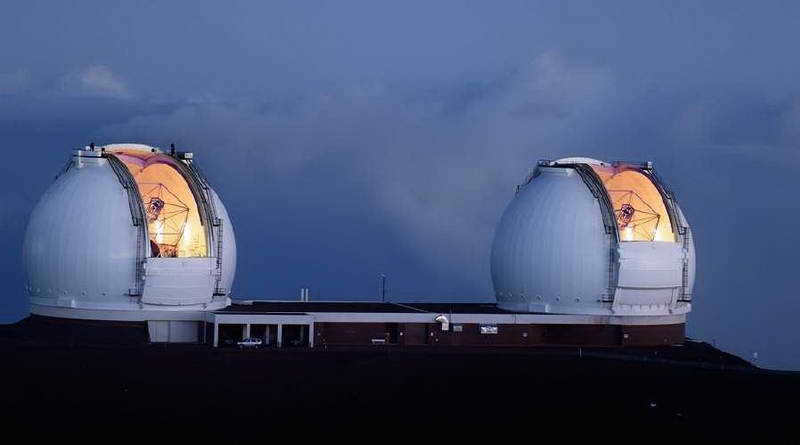
Main mirror diameter: 10 meters
Observatory: Keck
Location: Waimea, Hawaii
The Keck Observatory is home to two optical telescopes with a main mirror diameter of 10 meters. These telescopes were constructed in the early 1990s by two astronomers from California who dedicated years to their development and securing funding for the project. The primary source of funding came from philanthropist William Keck.
Due to their exceptional power and precision, the Keck telescopes are utilized by scientists to validate a wide range of theories. Several significant discoveries have been confirmed or made at this observatory, including:
- The identification of the precise center of the Milky Way
- Verification of the existence of an exoplanet
- Enhancing measurements of the magnitude of the Andromeda galaxy
Moreover, Keck -1 is considered as one of the foremost and extensively employed telescopes on a global scale. Its applications encompass the examination of gravitational lenses, galaxy clusters, and dark matter.
2. Hobby-Eberly Telescope (HET)
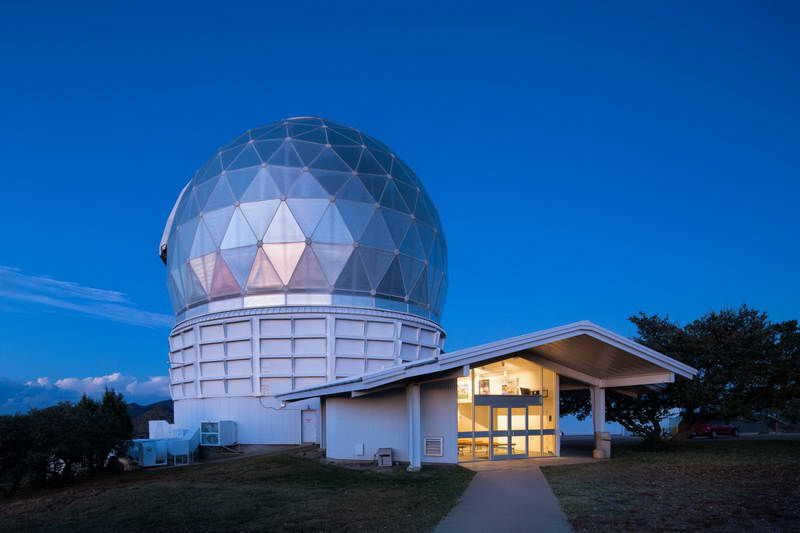
Main mirror diameter: 10 meters
Observatory: Macdonald
Location: Davis, USA
The size of the Hobby-Eberly telescope is slightly larger than 10 meters. Its diameter is 11 meters, but the visible space is only 10 meters. Prior to the upgrade, the HET mirror had a diameter of 9.2 meters. The Hobby-Eberly telescope is quite similar to SALT in that it consists of multiple hexagonal mirrors, but it was about 20% cheaper to construct.
Currently, the observatory is undergoing further modernization, which will involve the addition of a state-of-the-art spectrograph for studying galaxies at greater distances and obtaining more precise data on their velocities.
The main objectives for utilizing the HET are:
- Measuring supermassive black holes.
- Searching for dark energy (HETDEX)
- Search for habitable planets in our galaxy (Habitable Zone Planet Finder)
1. the Grand Canary Telescope (GTC).
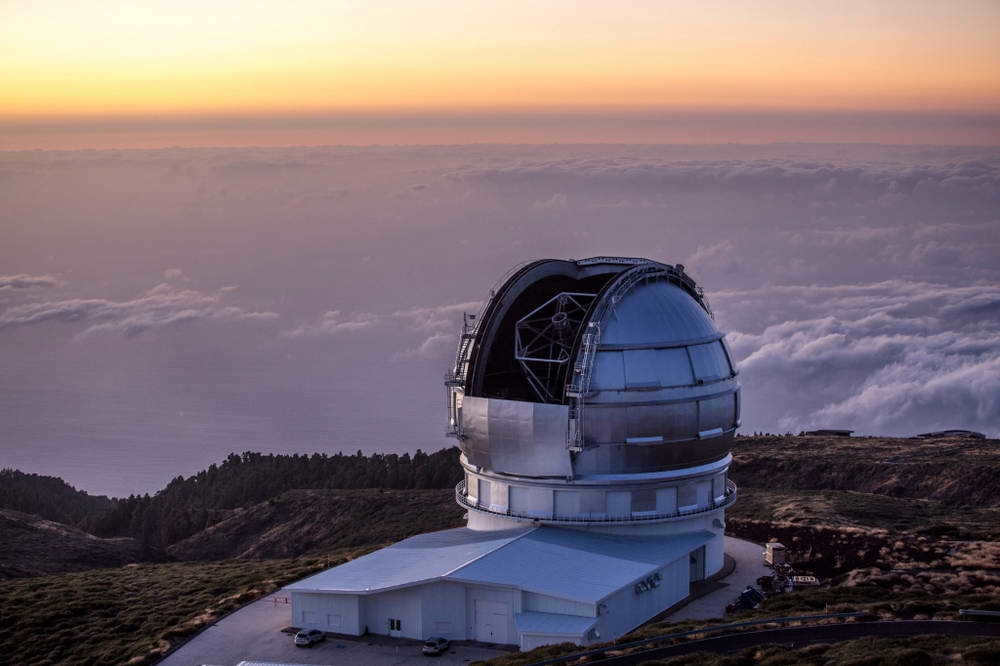
Main mirror size: 10.4 meters
Observatory location: Roque de los Muchachos
Geographical position: Las Palmas, Spain
The Gran Telescopio Canarias (GTC) is the world’s largest optical telescope situated on La Palma Island, Spain. It commenced operations in 2009 and features a main mirror with a diameter of 10.4 meters, consisting of 36 segments. The observatory is positioned at a high altitude of 2,200 meters above sea level in the mountains. Recently, the GTC has been equipped with a HiPERCAM high-speed imager, enhancing its ability to capture exceptionally high-quality images.
The telescope has played a vital role in numerous significant scientific breakthroughs, such as the verification of a dwarf galaxy’s existence on the outskirts of the Andromeda Nebula and the identification of the most remote galaxy cluster ever documented.
The GTC, which is a collaborative initiative between the Instituto de Astronomía de Canarias of the Spanish government and the National Science Council of Mexico, represents a groundbreaking advancement in astronomical research capabilities, significantly enhancing our understanding of the cosmos.
In the late 1990s, there was a proliferation of immense telescopes being constructed, surpassing the wildest dreams of astronomers from the 20th century. These monumental instruments have captured the attention of the public with their remarkable astronomical discoveries, and even more extraordinary devices are currently being erected.
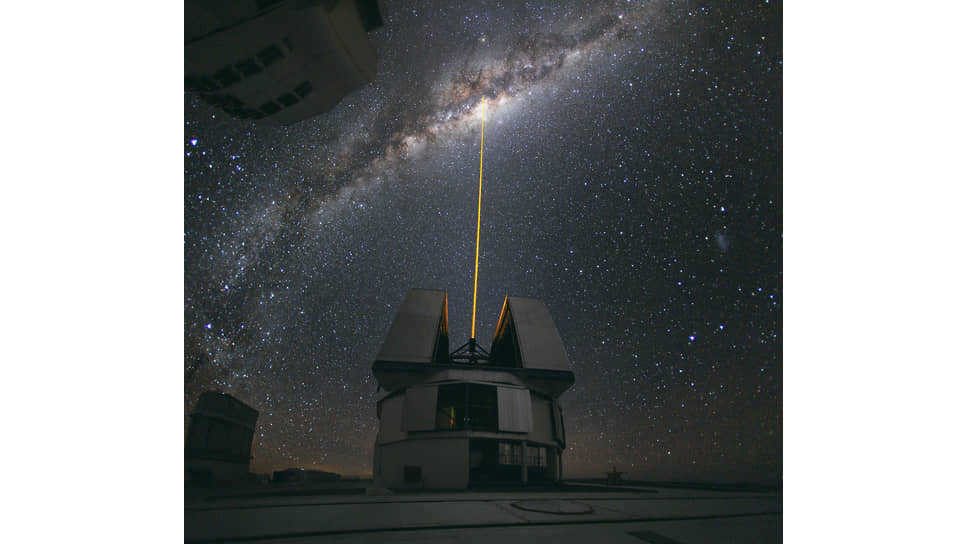

Click here to view in fullscreen
A laser beam is used by astronomers to create an artificial star in the sky, providing a reference light source.
The Atacama Desert in Chile is a renowned location for astronomers due to its clear skies and clean air. It is here that the European Southern Observatory (ESO) is constructing an Extremely Large Telescope (ELT) with a segmented mirror measuring at least 39 meters in diameter. The ELT is expected to be operational by 2027. Additionally, the United States is also building the Giant Magellan Telescope in the same region of Chile. This telescope will feature seven mirrors, each with a diameter of 8.4 meters, and is projected to see its first light in 2029. Meanwhile, construction on the Thirty Meter Telescope in Hawaii began in 2014 but has been temporarily halted for legal reasons. With these impressive telescopes under construction, the 21st century holds great promise for monumental discoveries in the field of astronomy.
Pushing the Boundaries and Surpassing Limits
In 1975, the USSR introduced the BTA (Large Azimuthal Telescope), equipped with a 6-meter mirror. This groundbreaking telescope was constructed using the most advanced materials, technologies, and methods available at the time. It appeared that the BTA would hold the title of the largest telescope for decades to come, as its predecessor, the five-meter American “Hale,” had maintained its record-breaking status for over twenty-five years.
However, just 16 years have passed since the first stars were observed through the groundbreaking Hawaiian telescope Keck, which boasted an unprecedented mirror diameter of 9.8 meters. Its twin, known as “Keck-2,” became operational in 1996, marking the beginning of a new era of large-scale telescopes. The United States joined the race in 1997 with the launch of the 9.2-meter Hobby-Eberly telescope. Meanwhile, the European Southern Observatory (ESO) introduced four 8.2-meter mirrors for their Very Large Telescope (VLT) between 1998 and 2000, making it the largest collective mirror area in the world. In 1999, the 8.2-meter “Subaru” telescope began its observations in Hawaii. The global “telescope fever” continued into the 2000s, causing the BTA to slip out of the top ten rankings. However, this does not diminish its significance as a valuable scientific instrument. Innovation and groundbreaking discoveries can be made with telescopes of any size.
What led to a major scientific advancement that astronomers in the 1970s couldn’t even fathom?
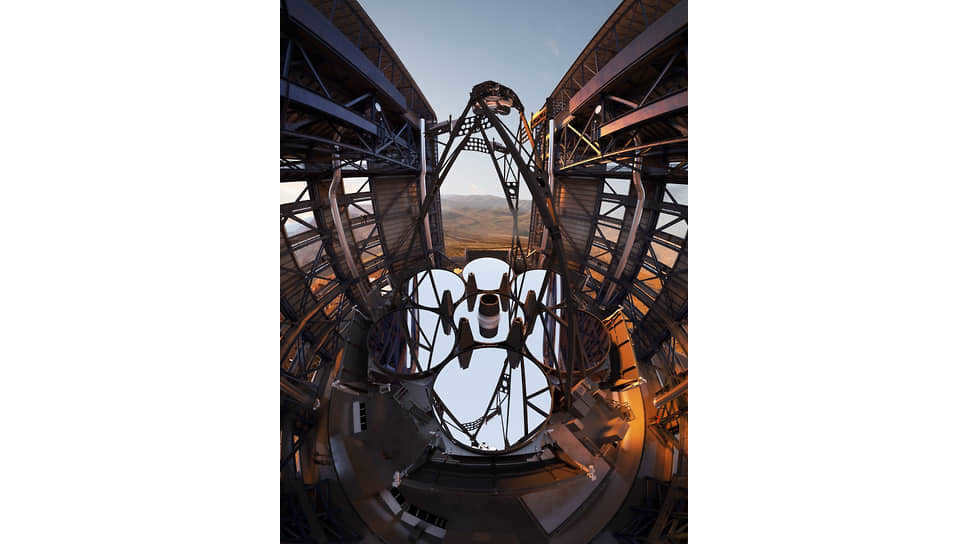
Click here to view in full screen
The construction of the Giant Magellan Telescope is currently taking place in Chile.
Photo credit: GMTO Corporation
An inconspicuous problem
Reducing Heat and Increasing Illumination
When it comes to thermal deformations, modern materials like cital and ULE (ultra low expansion glass) have a significantly lower coefficient of thermal expansion compared to borosilicate glass, which was commonly used for astronomical mirrors in the 20th century. This means that instruments are now less affected by changes in weather conditions.
Furthermore, mirrors have undergone significant improvements in terms of reflectivity. Nowadays, they are capable of reflecting at least 95% of incoming light, and in some cases, even up to 99%. As a result, clever schemes utilizing multiple reflective surfaces can be employed to correct any imperfections in the images produced.
The precision of mirror manufacturing has also seen remarkable advancements. It is now possible to create structures with diameters of several meters with a precision of better than ten nanometers. Undoubtedly, this level of precision would not have been achievable without the utilization of powerful computers in the production process.
It is important to bear in mind the contents of the mirror’s opposite side. When peering through the lens of a contemporary telescope, it is not merely the eye or a photographic plate that light encounters, but rather a quantum receiver possessing sensitivity that is nearly at the theoretical maximum. It is not expected for a human to be present in the vicinity of an operational receiver, as the body’s heat could potentially disrupt the intricate equipment.
Don’t give up, keep trying!
Despite the incredible advancements in modern materials, mirrors are still susceptible to temperature changes and other disturbances. These factors can cause deformations in the reflective surfaces, which in turn distort the path of the light rays. But astronomers have found a clever solution: instead of trying to fix the mirrors, they manipulate another element of the system to bring the light back into focus. It’s like a game of compensation, where the telescope adjusts itself to account for the errors and ultimately produces the right result. This technique is known as active optics and it can make adjustments in just seconds. This is particularly crucial because telescopes often need to accumulate light for hours in order to capture the best possible image.
Active optics offers an additional opportunity: the ability to construct mirrors from adjustable parts, allowing for real-time adjustments to their position and shape. One example of this is seen in the VLT, where the four main mirrors function as a single virtual mirror with a 16-meter diameter. Constructing such a large structure in one piece would be nearly impossible. And the potential of this technology doesn’t stop there – both the GMT and ELT will utilize the same innovative approach.
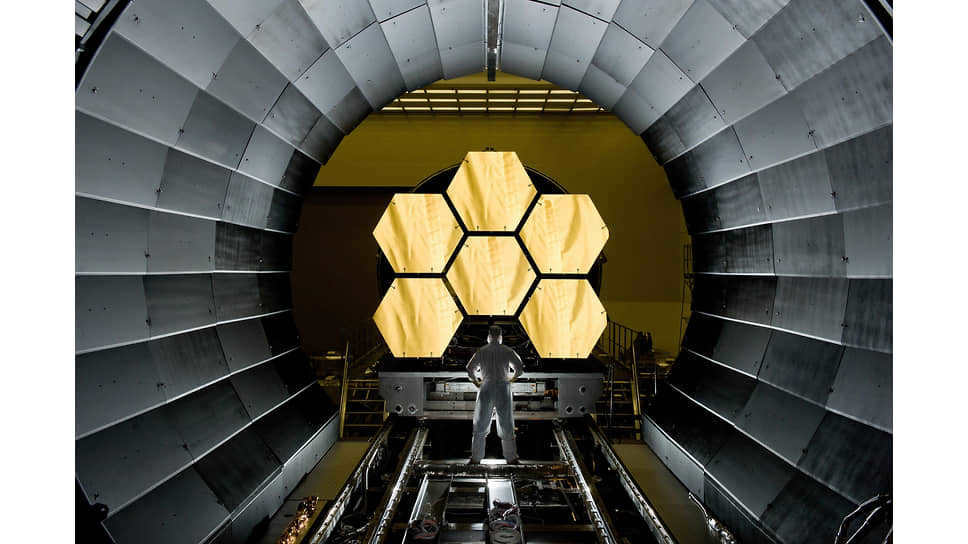
Maximize the screen
The James Webb Telescope, with its 6.5-meter mirror, represents the current pinnacle of orbital astronomy.
Photo: NASA / MSFC / David Higginbotham
Illuminating the stars
The atmosphere is the primary obstacle for astronomers. It’s not just that it absorbs light and weakens faint objects. This can be mitigated by increasing the size of the mirror. The real issue is the clarity of the image.
Even in the clear air of high-mountain deserts, there is continuous shaking that slightly alters transparency. This shaking causes blurriness in the image, reducing its sharpness. Important details are lost to observers. That’s why the launch of Hubble into orbit in 1990 was an epochal event in astronomy. This is despite its relatively small mirror diameter of 2.4 meters (ground-based telescopes of this size appeared over a century ago).
In the early 1990s, following the launch of the Hubble telescope, the U.S. military decided to declassify adaptive optics. Originally developed for tracking Soviet satellites, this technique proved to be a game-changer for astronomers. The concept is similar to active optics, where one of the reflecting surfaces is deformed to correct for the path of light and compensate for distortions. However, with adaptive optics, these corrections must be made rapidly to account for atmospheric turbulence, often at rates of 1-1000 times per second. The ability to quickly and precisely change the shape of a small reflecting element is a testament to the advanced technology used in telescopes today. It’s hard to believe that just a few decades ago, such a capability was nothing more than a fantasy.
To create a point of reference for astronomers, they actually illuminate an artificial “star” in the sky. By directing a laser beam into the atmosphere, sodium atoms are stimulated to emit light at a height of 90-95 kilometers, which is above the most turbulent layers of air. It is worth noting that the laser beam is quite powerful, with an output of tens of watts, which means it is switched off when aircraft or satellites are nearby.
The “laser star” needs to be illuminated within a few minutes of arc (equivalent to one-fifteenth of the size of the moon) from the observed object. Each point in the air has its own turbulence, and the further we are from the reference light source, the less accurate our calculated corrections become. However, scientists are actively working to expand the range of adaptive optics.
Returning from the heavens to Earth
Adaptive optics technology allows for the capture of images on Earth that are nearly as clear as those taken from orbit. The advantage of staying on the planet is the ability to use very large mirrors. The ELT, a 39-meter telescope currently under construction, will possess a penetrating power equivalent to that of a 20-meter telescope in orbit, making it nearly ten times larger than the Hubble Space Telescope.
The James Webb telescope, with its 6.5-meter mirror, represents the pinnacle of orbital astronomy today. However, due to its size, the mirror had to be divided into 18 movable segments in order to fit under the rocket’s fairing. The precise positioning of these segments is controlled by 132 micromotors, each with a precision of a micron. The deployment of the mirror was the most thrilling moment post-launch, as the moving parts of any mechanism are the most susceptible to damage.
It is hardly surprising that the construction of the “Webb” telescope has been a long and arduous process: the initial launch date of 2007 was delayed until 2021, and the budget has ballooned from the original $500 million to over $10 billion. What sets this telescope apart is that it operates in the infrared spectrum, rather than the optical spectrum. Infrared wavelengths are longer than visible light wavelengths, which means they are less affected by mirror imperfections and the precision of segment control. On the other hand, creating an orbital version of the Extremely Large Telescope (ELT) would not only be exorbitantly expensive, but also practically impossible. Furthermore, there is no need for an orbital ELT since the ground-based ELT is already under construction, and at a relatively modest cost of €1.3 billion. It is worth noting that space technology, all else being equal, is significantly more expensive than its terrestrial counterparts.
The likelihood is high that Hubble was not just the initial, but also the final large optical telescope in orbit. The crucial factor here is the size: smaller specialized instruments have been and will continue to be sent into space. For instance, telescopes dedicated to the search for exoplanets, like TESS, which was launched in 2018. These telescopes need to accurately measure the brightness of stars in order to capture the moment when some of their light is blocked by a planet passing in front of them. Another example is the Gaia space mapper, launched in 2013, which determined the precise coordinates of 1.5 billion stars. These and other measurements are so delicate that despite all the advancements in adaptive optics, they are best performed above the Earth’s atmosphere.
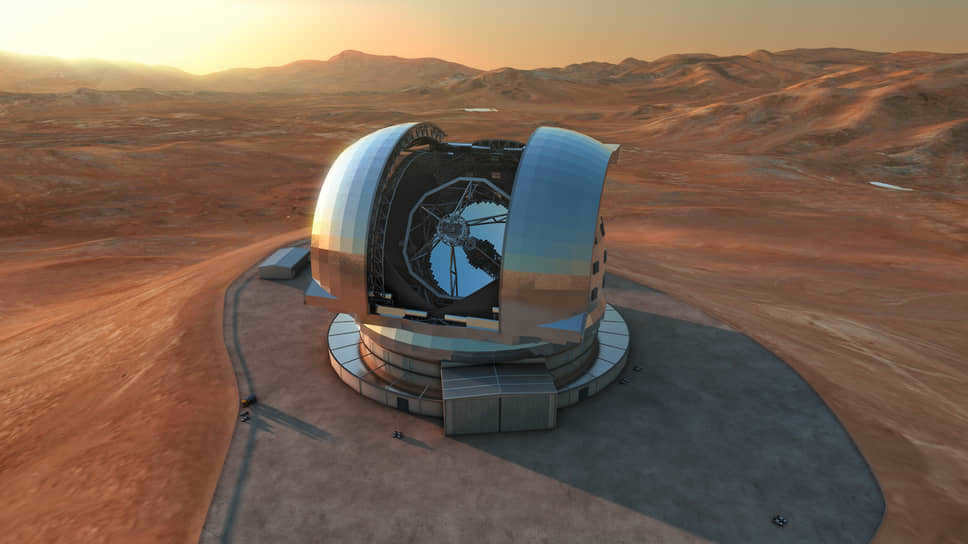
Click here to view the Extremely Large Telescope of the European Southern Observatory, Chile, which is currently being built, in full screen.
The construction of the Extremely Large Telescope of the European Southern Observatory in Chile is currently underway.
Indeed, the age of magnificent and costly orbiting telescopes did not conclude with the initiation of Hubble. It is simply that the fresh telescopes are scarcely optical. Space is essential for observing in beams that scarcely or not at all penetrate Earth’s atmosphere: infrared, ultraviolet, X-rays, and gamma rays.
Each astronomical band has its own unique role. For instance, the expansion of the Universe has caused the light from the farthest galaxies to transform into infrared waves. The “Webb” telescope is perfectly suited for detecting these objects, and in just one year of operation, it has already identified nearly one hundred galaxies whose radiation reached Earth over 96% of the age of the Universe. It is possible that these rays originated from the initial generation of stars in the Universe, which have long since disappeared without a trace. Meanwhile, the telescope has also been able to investigate the structures of numerous closer galaxies, explore the birthplaces of stars and planets within the Milky Way, and even make the groundbreaking discovery of its first exoplanet. And these are merely the initial findings from its ongoing mission.
As we conclude our discussion on large telescopes, it is important to remember the significance of small telescopes. Even instruments with a diameter ranging from 30 to 50 cm contribute to the field of science, both in space and on Earth. A prime example is the Russian network of automatic telescopes called MASTER. This network diligently scans the sky, searching for various fast-moving phenomena, ranging from supernova flares to asteroid flybys. Large telescopes like the VLT are not suitable for this type of work due to their narrow field of view and tightly scheduled observing time. However, if a patrol telescope detects something particularly intriguing, it is then thoroughly examined by larger instruments, such as 10-meter giants. Whether large or small, terrestrial or space-based, optical or any other type, telescopes collaborate to piece together the puzzle of the Universe for astronomers and all of humanity.
The project to replace the mirror on the Large Azimuthal Telescope (BTA) of the Special Astrophysical Observatory (SAO) of the Russian Academy of Sciences, which had a cost of 250 million rubles, ended in failure, resulting in the old mirror being returned.
The BTA, which has a diameter of 6 meters, is once again able to observe celestial objects after the unsuccessful replacement of its main mirror in 2018. The new mirror proved to be unsuitable for proper operation, leading to the decision to reinstall the original mirror from 1979.
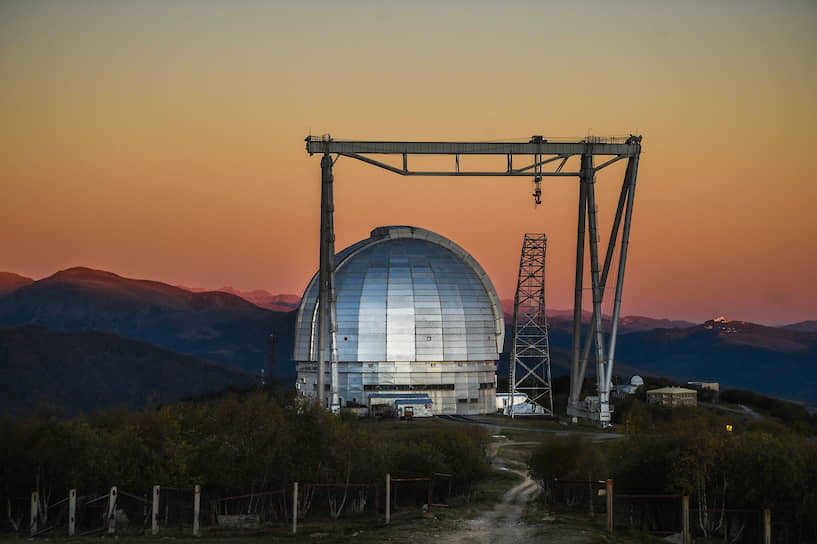
Go full screen
Image: Kristina Kormilitsyna, Kommersant / purchase image
Smaller is superior
The BTA, situated in the village of Nizhny Arkhyz in the Karachay-Cherkessia mountains, is one of the largest telescopes in the world. It was launched in 1975.
During the 1960s and 1970s, two mirrors were produced for the BTA at the Lytkarinsky Optical Glass Plant (LZOS) near Moscow. The glass blanks, weighing approximately 70 tons and measuring about 1 m in thickness, were first cooled for two years and then polished with diamond powder for an additional seven years. The first mirror lasted four years on the telescope before being replaced in 1979 due to imperfections on its surface.
The world’s largest telescopes
In the 1990s, scientists began discussing the need for a new replacement mirror for the BTA telescope. At that point, the mirror had already undergone multiple re-alumination processes: every five years, the reflective layer of aluminum was stripped off using acids and a new coating was applied. However, each of these procedures caused slight degradation to the mirror’s surface, ultimately affecting the quality of observations.
In the early 2000s, the Russian Academy of Sciences took on this challenge and proposed two options. The first option was to repolish the original 6-meter mirror of the BTA. The second option was a more radical approach: upgrading the telescope by replacing the 6-meter mirror with a larger 8-meter mirror.
In 2004, there was an opportunity to purchase a surplus mirror in Germany specifically made for the Very Large Telescope (VLT) complex. This mirror, measuring 8 meters in size, would have significantly improved the sharpness of the Russian telescope, making it one of the top ten largest telescopes in the world.
However, there were several drawbacks to this option, including its high cost and associated risks. The purchase of the mirror alone would have amounted to €6-8 million, and an additional amount of the same magnitude would have been required for the polishing process. Since Russia lacked the necessary equipment for mirrors of this diameter, the polishing would have had to be outsourced to Germany. Furthermore, the upper part of the telescope’s structure would have needed to be redesigned, and all scientific equipment would have required reconfiguration to accommodate the new aperture.
“According to Dmitry Kudryavtsev, Deputy Director of the SAO, once the 8-meter mirror became operational, the telescope dome would have been the only part that remained undamaged,” he told Kommersant. “However, if we consider the Russian context with its intermittent funding of scientific projects, we could easily find ourselves in a scenario where the telescope is literally in fragments, funding is lacking, and we are indefinitely denied access to observations.”
The calculation of the cost for the redesign of the telescope has not even started yet. According to Valery Vlasyuk, the director of the SAO, it was clear that the RAS would not be able to find the necessary funds. In 2004, the Academy made the decision to restore the BTA’s first mirror, which had been kept in a specialized container since 1979.

Maximize to full screen
Valery Vlasyuk, the Director of the Special Astrophysical Observatory of the Russian Academy of Sciences
Photo: Christina Kormilitsyna, Kommersant
The task was once again assigned to LZOS, which is now a part of the Shvabe holding company of Rostec State Corporation. In order to rectify the “inherent” flaws, 8 mm of glass was removed from the surface of the 28-square-meter mirror, resulting in a weight reduction of nearly one ton. The polishing process was initially planned to be completed within three years, but due to funding interruptions, it took a decade to finish.
The overall cost of replacing the BTA mirror exceeded the initial estimate of 160 million rubles and reached 250 million rubles – roughly equivalent to €3.5 million at the current exchange rate.
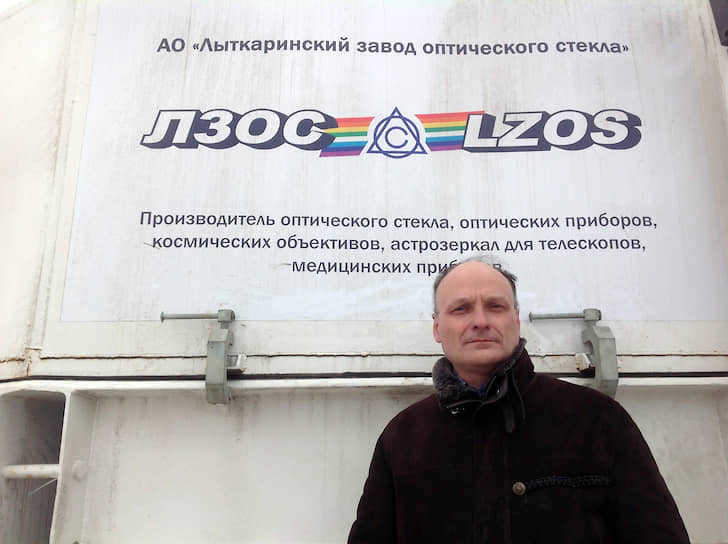
Go to full screen mode
Vladimir Patrikeev, the deputy head of the LZOS research and production complex
Photo: Yulia Bychkova, Kommersant
The refurbished mirror was delivered to Nizhny Arkhyz in February 2018. “Kommersant provided a detailed account of the transportation of this particularly delicate cargo, weighing 42 tons, which took eight days.
Prior to being transported to the observatory, the restored mirror underwent certification at LZOS. However, after it was installed in the standard BTA frame, significant deviations from the specified technical specifications were discovered.
The parabola enables the process to revolve
“Multiple factors are used to evaluate the quality of the mirror surface, with roughness and adherence to the parabolic form being the primary ones,” states Mr. Kudryavtsev. “The LZOS team successfully improved the roughness of the mirror surface. While the second BTA mirror had a surface roughness of 20 nanometers, the restored mirror now only has a roughness of one nanometer. However, there were challenges regarding the mirror’s shape.”
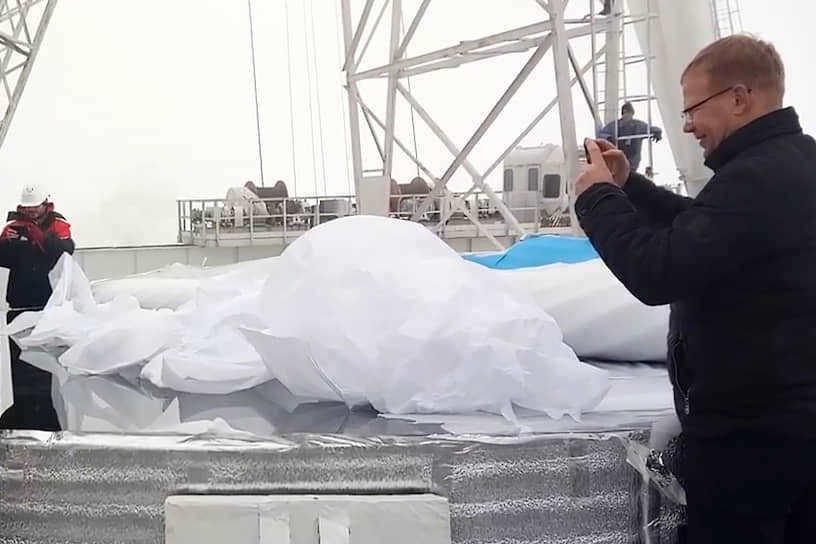

Switch to full screen mode
Dmitry Kudryavtsev, the SAO RAS Deputy Director, is photographing the unveiling of the refurbished BTA mirror
Photograph: Yulia Bychkova, Kommersant
According to the technical specifications, the standard deviation from the ideal paraboloid should have been no more than 95 nanometers. In actuality, this parameter turned out to be 1 micron, which is ten times worse than the required value.
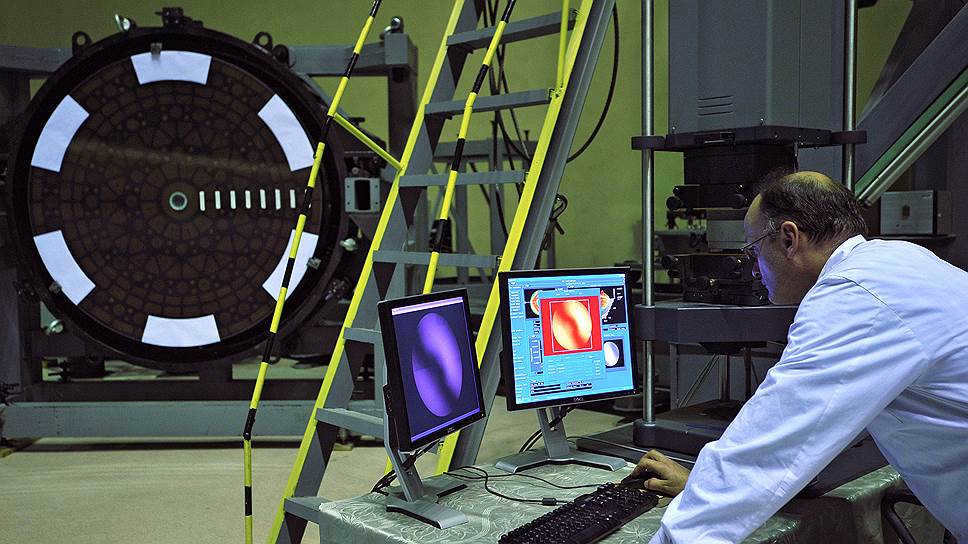
Temporary Inaccessibility of the Large Telescope Azimuthal’s Mirror to Astronomers
Due to a poor quality mirror, the Large Telescope Azimuthal (BTA) faced temporary inaccessibility for astronomers. Attempts were made to correct the deficiencies using mechanical systems, but the focusing remained unstable and generally poor, making photometric observations impossible. Although other scientific programs were carried out on the BTA, they experienced a loss of efficiency.
The process of returning the former mirror began on June 3, 2019, with test observations and final tuning of the telescope taking place in September. By October, the BTA was fully operational again, with a total expenditure of 5 million rubles for the operation.
“We are pleased with the successful return of the antique mirror. It seamlessly fit into the frame and the image quality is exceptional. We will continue to operate in this manner,” the director of SAO RAS confidently stated.
Assigning Responsibility and Taking Action
After a thorough assessment by a collaborative committee consisting of SAO RAS, LZOS, and NPO OPTIKA, it was determined that the restored mirror did not meet the required technical specifications and would require further adjustments. The primary reasons for this discrepancy were the absence of a fixed frame during manufacturing and errors in computer modeling.
History of the Russian Academy of Sciences’ Special Astrophysical Observatory
In the era of the Soviet Union, the initial mirror for a genuine telescope frame was meticulously polished. It was then transported from LZOS to the Caucasus and installed on the BTA. In order to polish the second mirror, a prototype of the frame – a simpler and more affordable version – was crafted at the factory.
In 2004, the Russian Academy of Sciences made the decision to restore the first mirror, which entailed the creation of a new replica of the frame. The original frame was disposed of in 2007.
However, complications arose with funding – there was insufficient financial resources to produce a copy of the BTA frame. It was at this point that experts determined that in the 21st century, it would be feasible to polish the mirror without a rigid frame, utilizing computer modeling instead.
During the control measurements, a steel band was used to support the mirror. The deformation of the glass that occurred during this process was simulated, tested in an experiment, and considered when adjusting the operation of the polishing machine. However, it was found that the inhomogeneity of the glass was much greater than initially calculated. As a result, the restored mirror in the standard frame exhibited a deviation from the desired shape that was ten times worse than anticipated.
Challenges in the Field of Astronomy and Astronautics
The Commission has acknowledged the need to replicate the BTA frame in order to polish the first mirror. Currently, the original frame is being kept in Nizhny Arkhyz. The cost and feasibility of repeating this process are still unknown. Vladimir Patrikeev, the representative of the plant, has stated that no decision has been made regarding the restoration of a duplicate frame at LZOS.
“All these enhancements have remained with us and will decrease the cost of future work,” states Mr. Vlasyuk, “but at the moment the government lacks the funds to continue the mirror’s renovation. In the early 2000s, SAO RAS sent letters to all the authorities and oligarchs, requesting their assistance in refurbishing the BTA. And now we are also prepared to seek help from Kommersant readers in order to obtain a mirror with enhanced features.”
Yulia Bychkova, Nizhny Arkhyz
Gallery of Photos
The Story of the Biggest Telescope in Russia
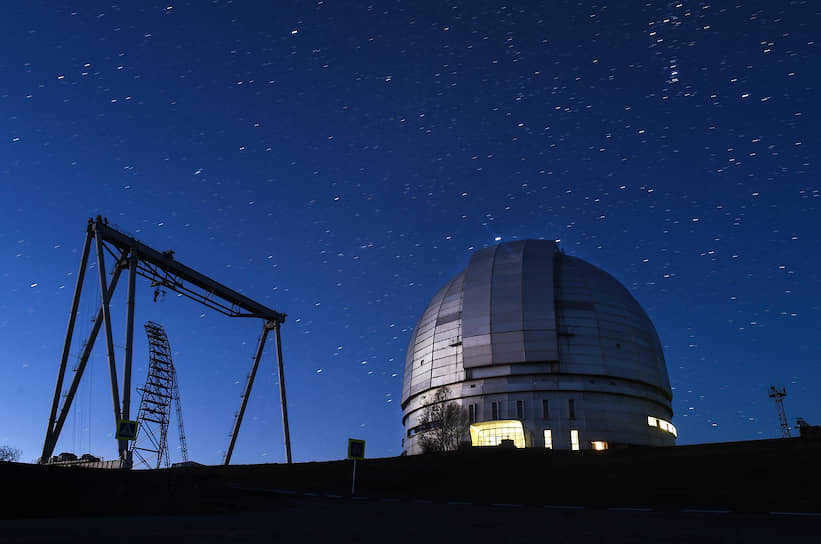




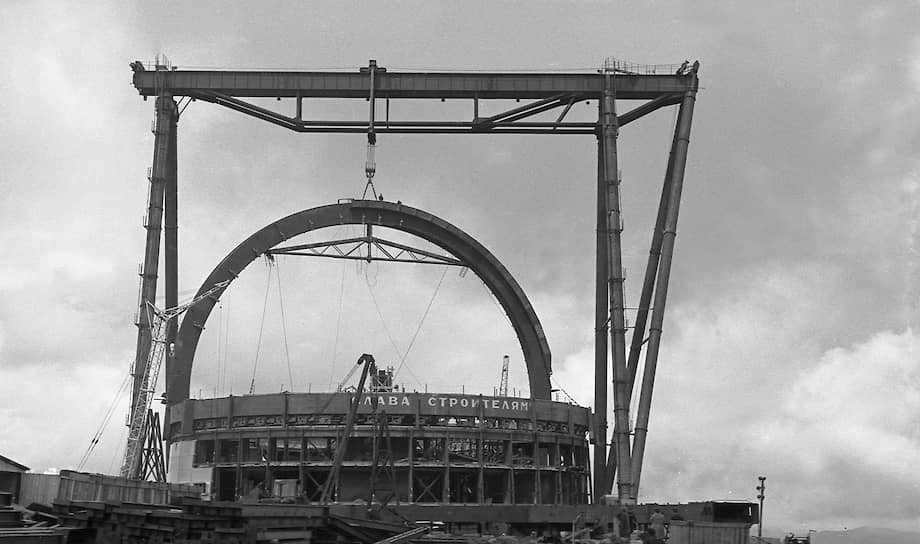


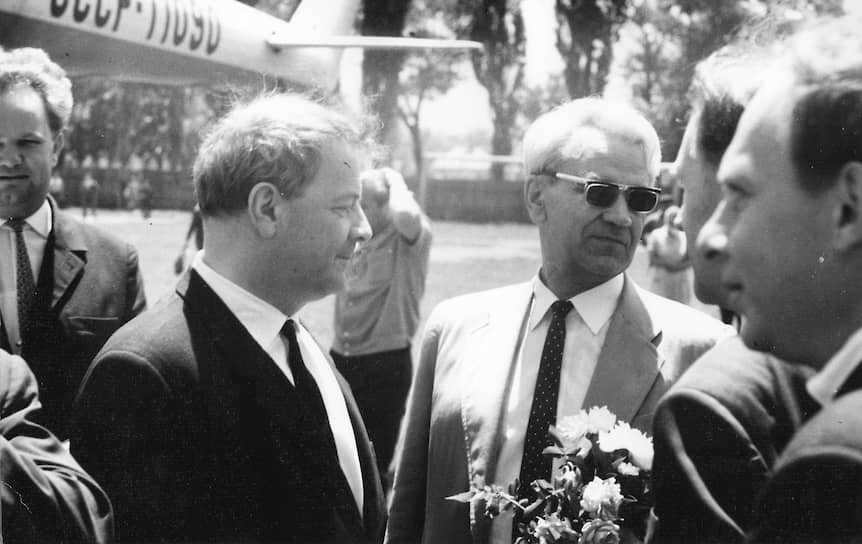

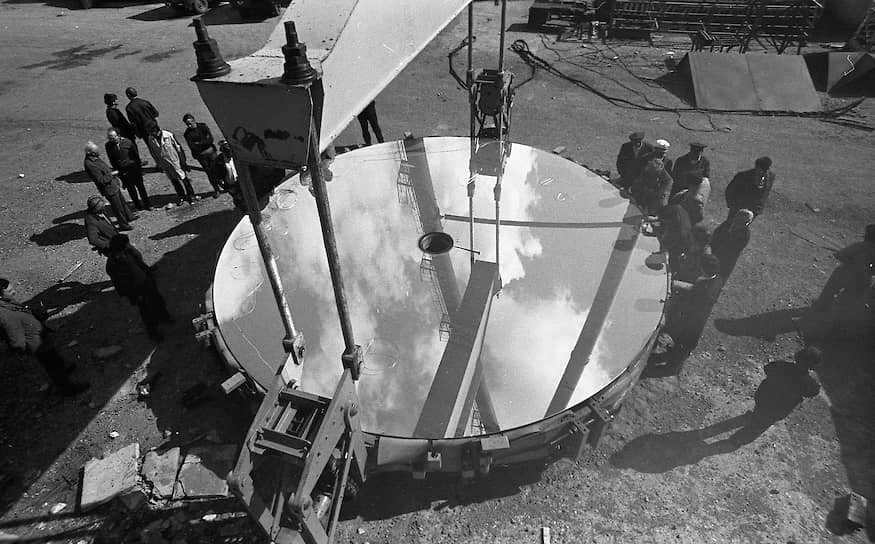



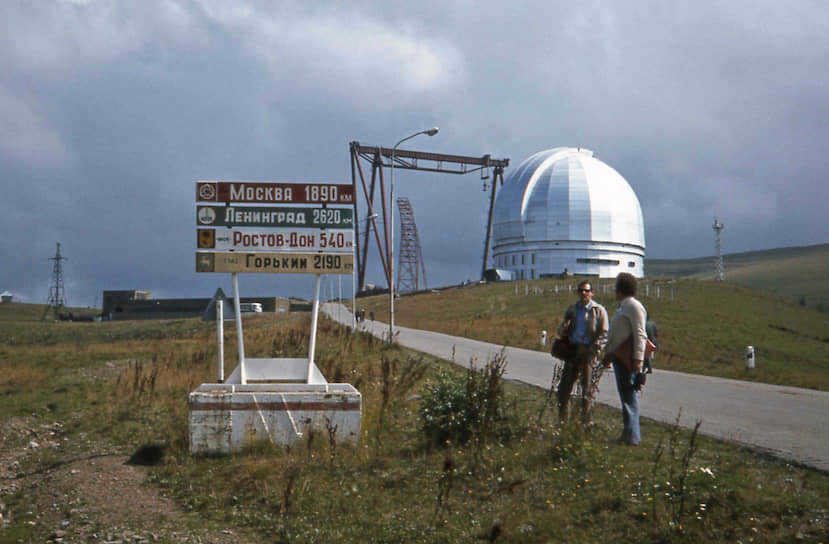

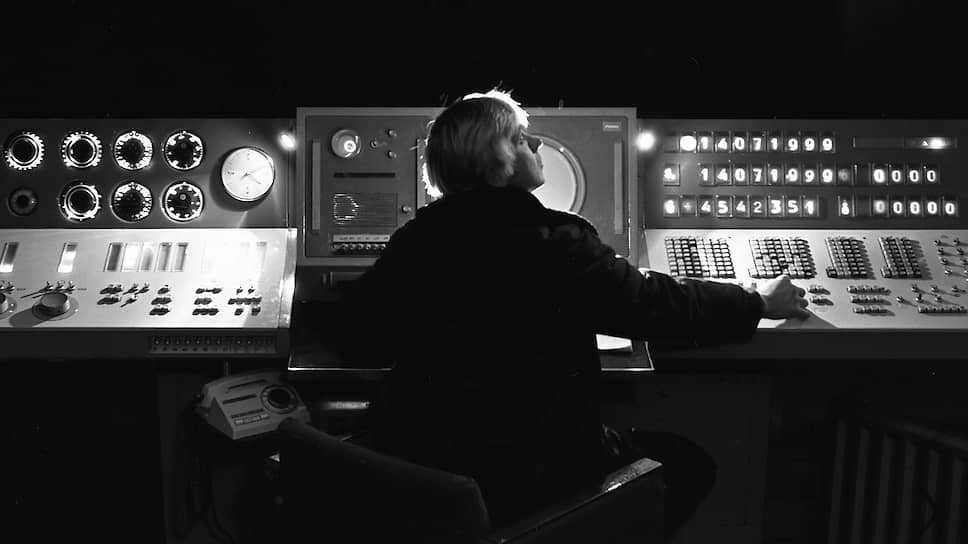
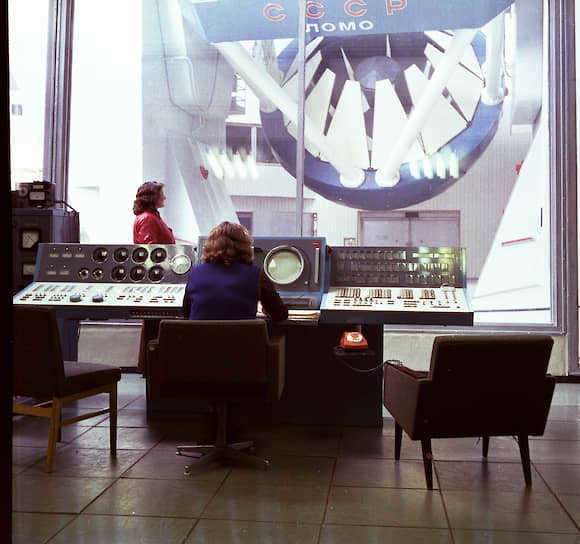
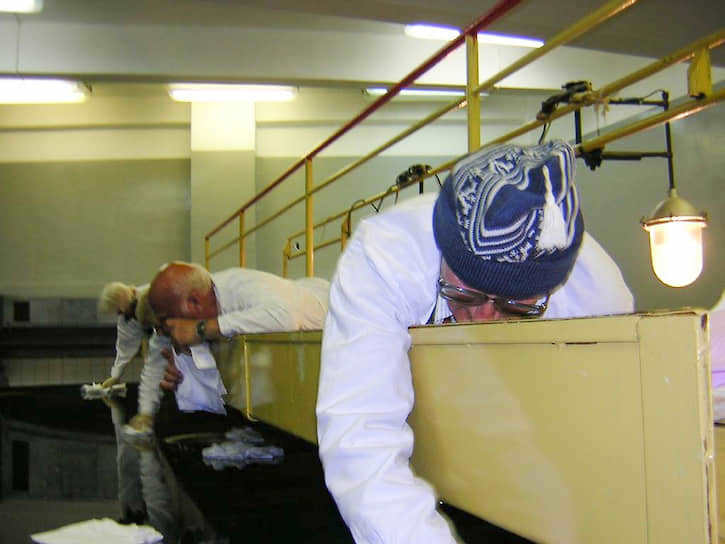
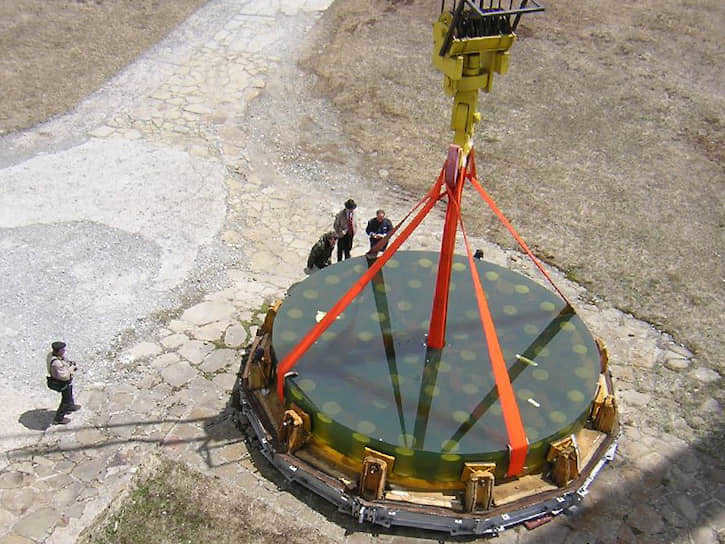

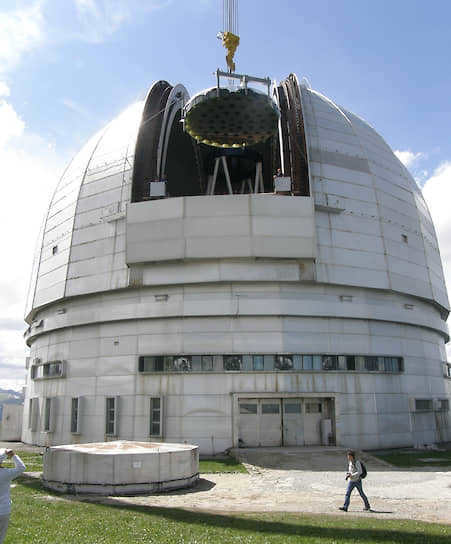
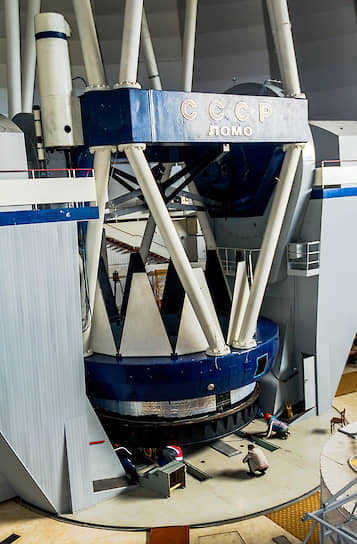
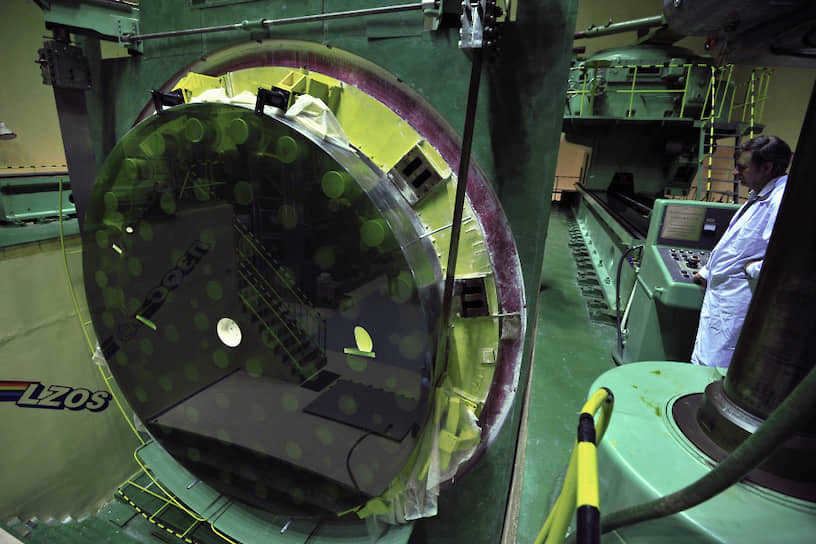
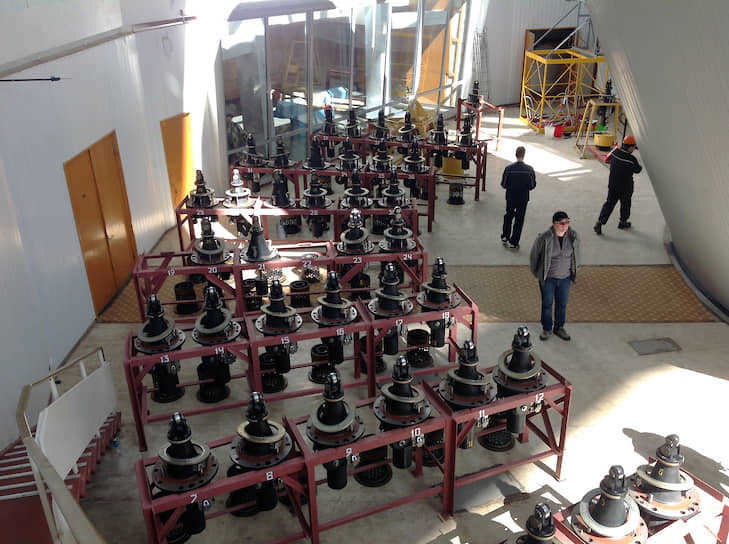
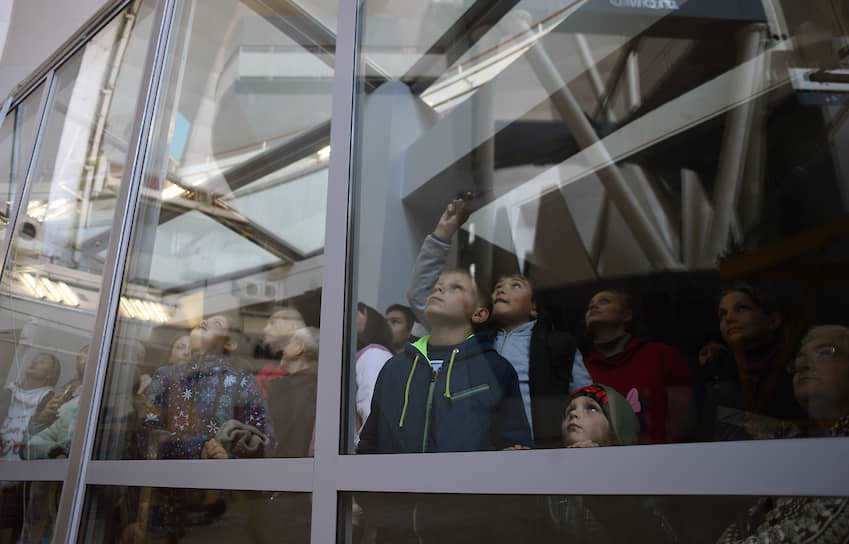
The largest optical telescope in Russia and Eurasia, known as the Large Azimuthal Telescope (BTA), is situated in the mountains of Karachay-Cherkessia. Its main mirror has a diameter of 6 meters, making it the largest telescope in the world for a period of 17 years since its inauguration in 1977.
Photo: Kommersant / Kristina Kormilitsyna / buy photo
The construction of the Large Azimuthal Telescope (BTA) with its groundbreaking 6-meter mirror was a revolutionary achievement in telescope design. Prior to the 1960s, it was deemed technically impossible to build telescopes with mirror diameters exceeding 5 meters due to bending effects. However, a group of Soviet scientists, led by Bagrat Ioannisiani (pictured), successfully resolved this issue by employing the innovative alt-azimuth mounting system for telescopes with large mirrors. Since then, all telescopes worldwide featuring mirrors larger than 3 meters in diameter have been constructed using this method.
The construction of the observatory infrastructure began in 1965.
In the spring of 1966, the construction of the BTA tower on Mount Pastukhova began.
The BTA was constructed in the pristine mountains of Karachay-Cherkessia. To create a road from the valley to the chosen location at an altitude of 2,100 meters, it was necessary to blast the mountains. The construction of each kilometer of the winding road cost 1 million Soviet rubles.
The construction of the BTA took 10 years. According to documents from 1962, the cost of the construction amounted to 25.8 million Soviet rubles (equivalent to 2.9 billion rubles in today’s currency).
Even during the construction of the telescope (pictured), herds of cows and sheep still graze on the alpine meadows surrounding the BTA in the summer.
The transportation of large components of the telescope was a noteworthy event for the local residents. In the photograph: the BTA telescope racks being transported in July 1968.
In 1968, the assembly of the BTA’s large-sized parts took place.
In the photograph: the telescope tube being brought into the tower.
Ivan Kopylov, the first director of SAO RAS.
The construction of the largest telescope in the world was personally overseen by the head of the USSR Academy of Sciences, Academician Mstislav Keldysh (right). In the photograph – with Academician Lev Artsimovich in 1969 during a visit to the BTA construction site.
Transportation workers gathering before ascending the mountain on which the BTA is being constructed. July 1968.
In 1974, the observatory received its first BTA mirror. To produce it, a glass blank with a thickness of approximately 1 meter and a weight of around 70 tons was initially cooled for a period of two years. Subsequently, it underwent a polishing process lasting seven years, utilizing a powder comprised of 12 thousand carats of natural diamonds of technical quality. However, this mirror, which had been subjected to a twenty-first century restoration at the Lytkarinsky Optical Glass Plant, unfortunately did not prove successful.
The transportation of the 6-meter diameter BTA main mirror from Lytkarino, located near Moscow, to the Caucasus in 1974 was a noteworthy feat. To begin, a rehearsal of the transportation process took place, during which a concrete replica of the mirror was transported by barge to Rostov-on-Don. From there, it was slowly driven to the BTA by a specialized tractor over a duration of more than a week. Having perfected the transportation technique through this practice run, the valuable 42-ton mirror successfully completed the same journey.
The BTA is situated at an elevation of 2100 meters above sea level. The astronomers’ village is positioned one kilometer lower. They are connected by 16 kilometers of mountainous serpentine, which is traversed twice a day by a shuttle bus for BTA employees. In the past, it would occasionally happen that during winter, the snow would accumulate higher than a person’s height, causing the bus to frequently get stuck. Astronomers and engineers would then have to push it. However, such situations no longer arise due to the timely clearing of the road.
To celebrate the commencement of observations at the BTA, the newspaper “Pravda” was published on February 26, 1976, featuring a congratulatory editorial.
The astronomical hub of Russia is located nearly two thousand kilometers away from Moscow.
The telescope is situated amidst the scenic mountains of Karachay-Cherkessia.
Photo: Stas Korotkiy / Ka-Dar Observatory.
In the past, an engineer was responsible for controlling the movement of the telescope during observations of celestial objects (depicted in the image). Nowadays, this task is carried out by a computer.
During technical work in the Soviet era, the telescope was controlled by an engineer.
The second mirror of the BTA telescope regularly underwent re-alumination procedures. Approximately every five years, the mirror’s reflective layer of aluminum was removed using acids and then a new coating was applied. Each of these procedures caused microscopic damage to the mirror’s surface, which affected the quality of observations. In the early 2000s, the RAS (Russian Academy of Sciences) made the decision to restore the first BTA mirror in order to rectify the situation.
In 2007, the first BTA mirror was sent to the Lytkarinsky Optical Glass Plant (LZOS) for repolishing. The transportation cost amounted to 3.5 million rubles.
The mirror returned to SAO RAS in 2018 after being transported from Lytkarino for a cost of 11 million rubles. The delivery process took a total of eight days, during which the mirror had to be kept within a protective container to ensure that its vibrations did not exceed 3 mm. This restriction meant that the transport vehicle could not exceed speeds of 40 km/h, and in mountainous areas, the speed had to be reduced to a maximum of 10 km/h.
Photo: Andrei Zhelenkov / SAO RAS
The arrival of the world’s heaviest telescope mirror at the BTA dome in 2018.
During the installation of the restored mirror into the telescope frame, it was discovered that the deviation from the specified surface shape was ten times greater than the acceptable limits.
Photo: Valentin Erokhin / SAO RAS





